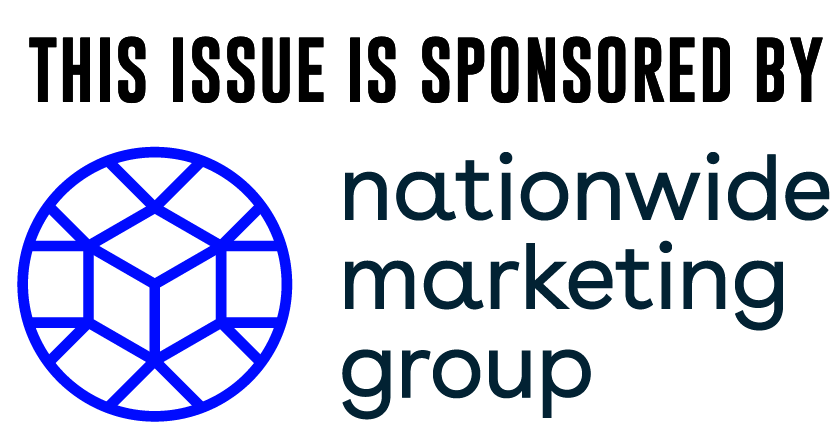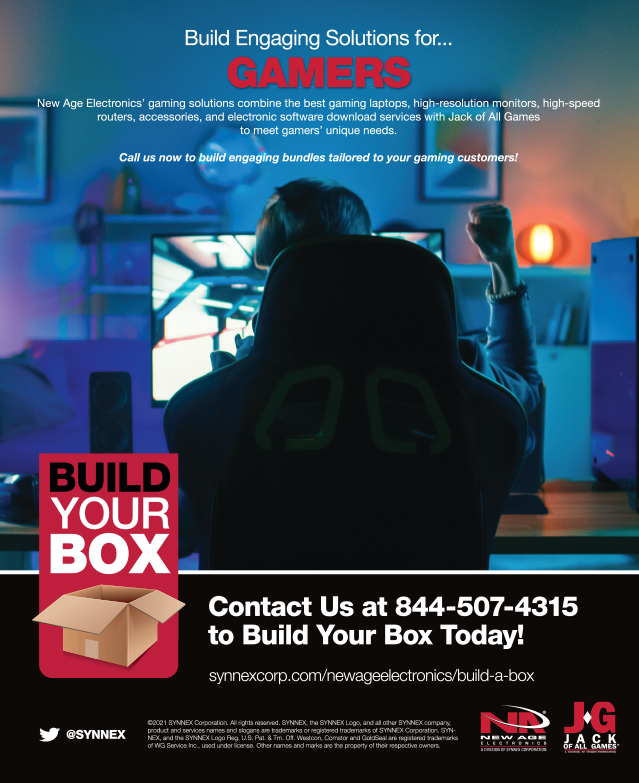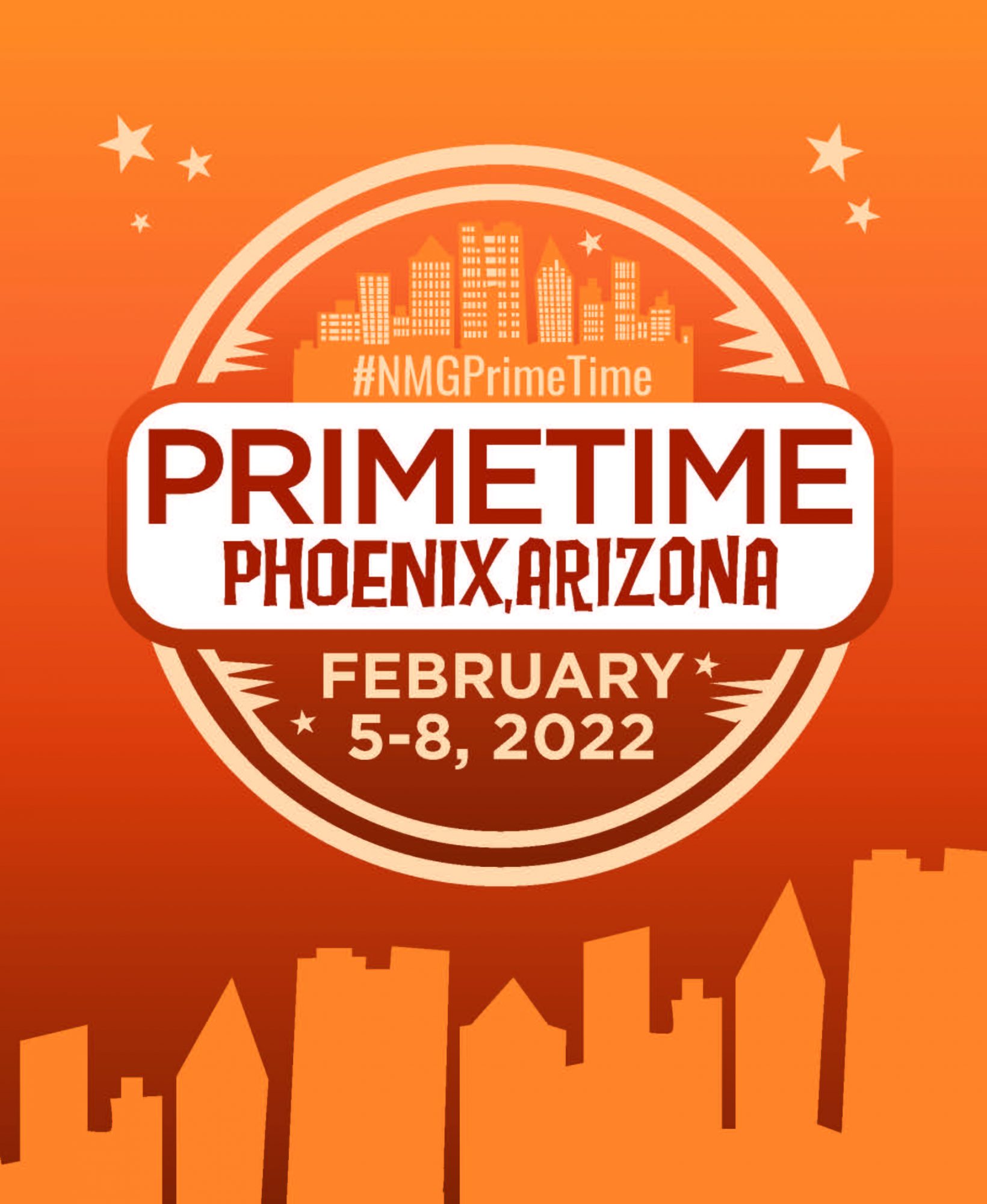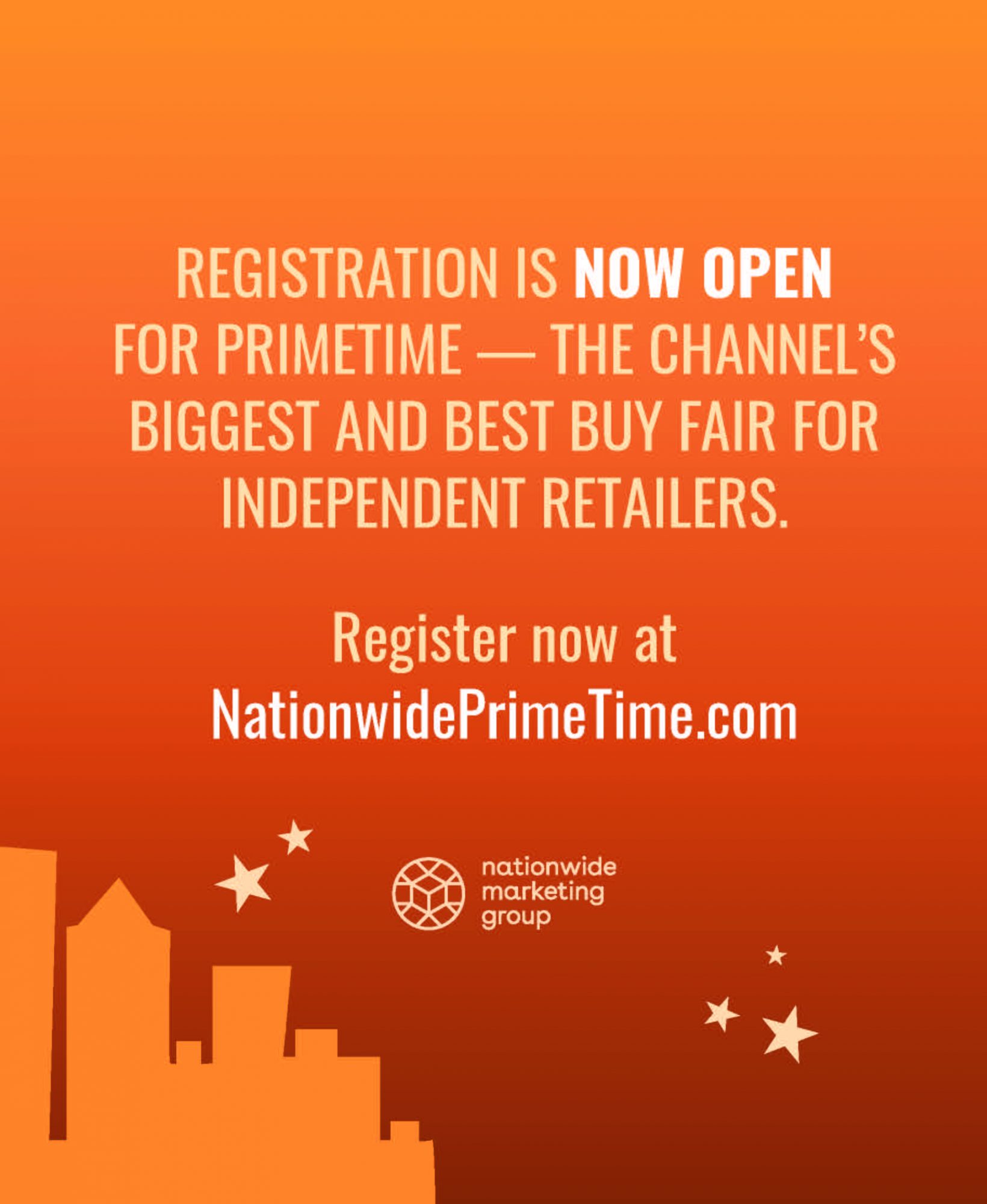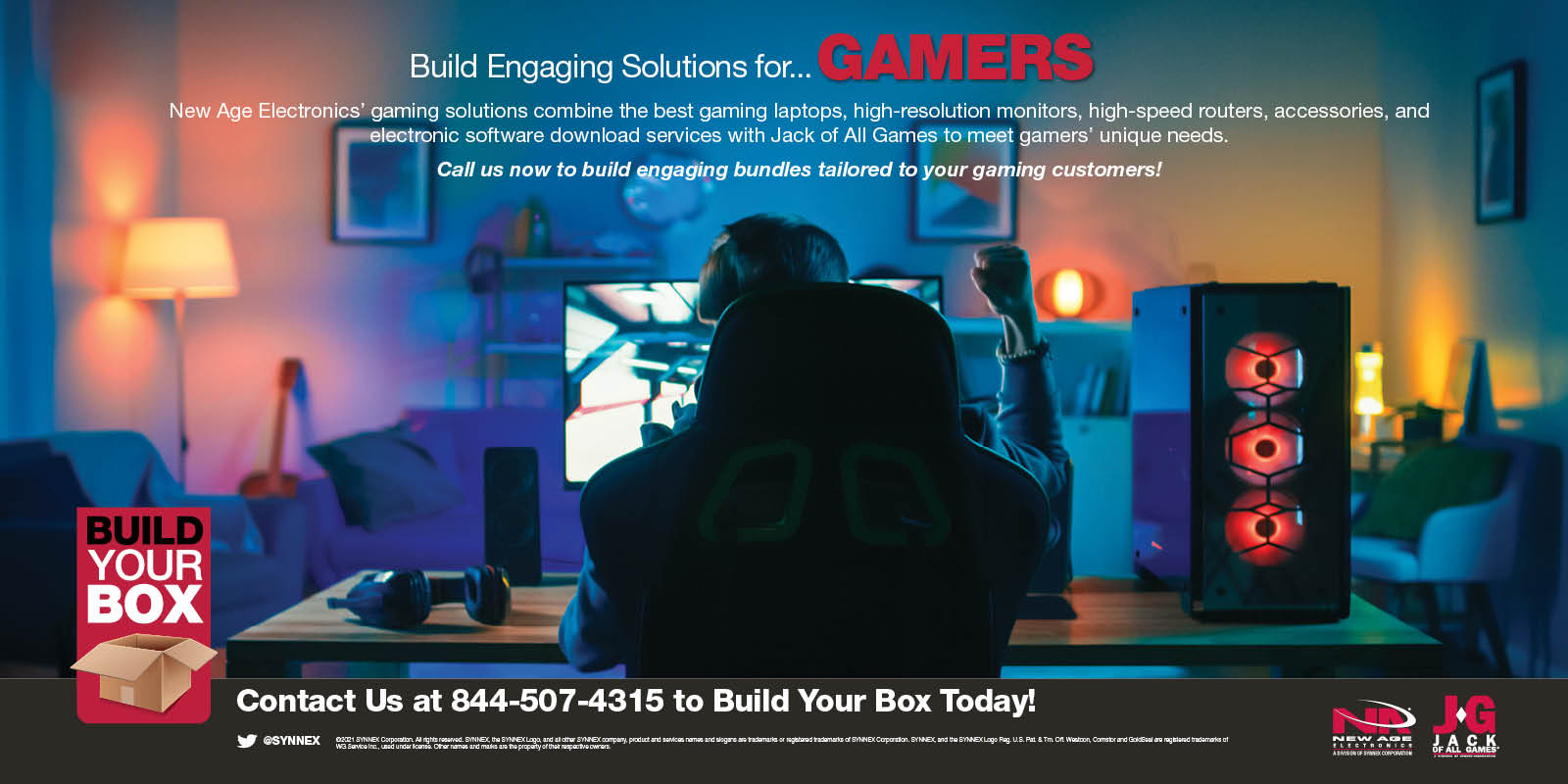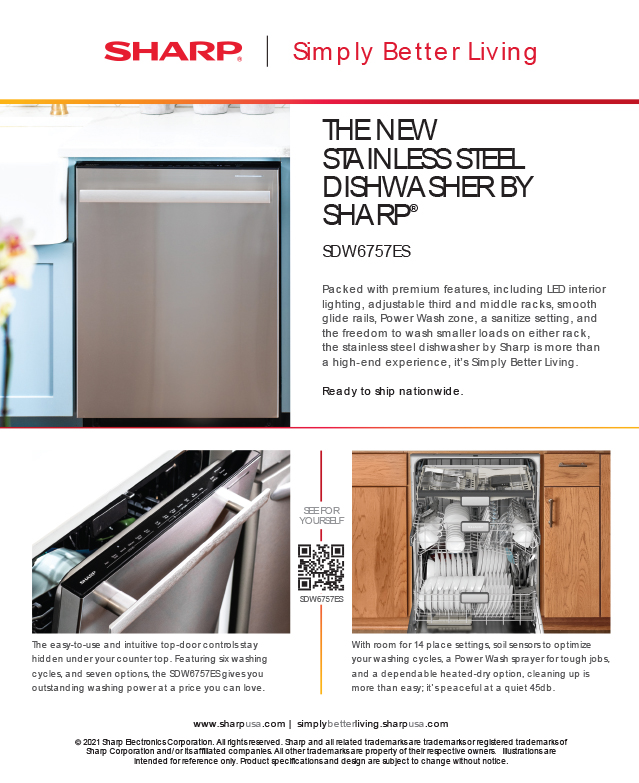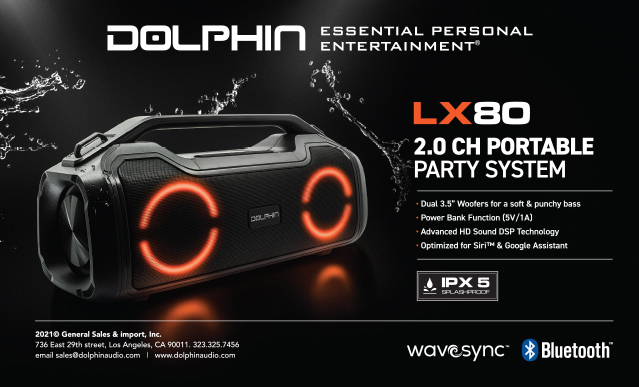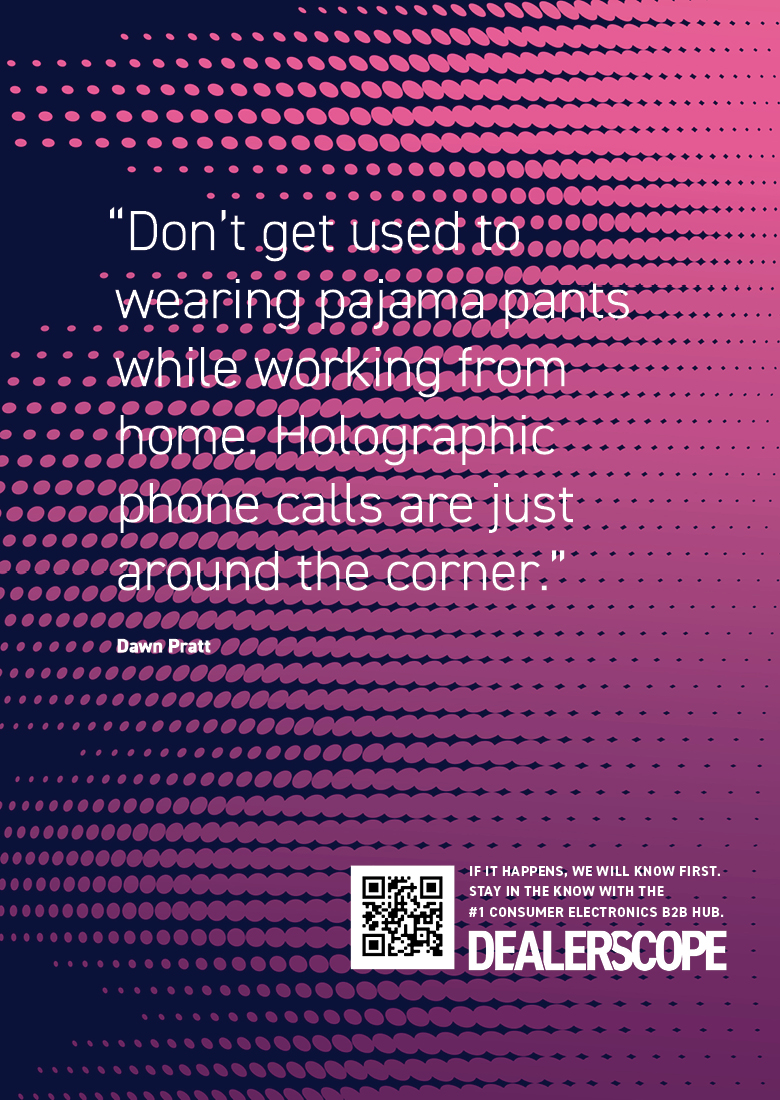Inside the Dealerscope December 2021 DigiMag: Even as the Omicron variant threatens to keep the COVID-19 pandemic going, this past year has been good for CE and appliance retailers thanks to unprecedented demand, reopenings, and advances in omnichannel technology. We look at the best and worst of 2021, the best new work-at-home devices, tips on how to sell the perfect gaming setup, an explainer on the state of hearables, and a look ahead at the first in-person CES in two years.
2021: A Year Like No Other

I can’t believe we are already producing the last issue of Dealerscope for 2021. I am a year older, with a few more gray hairs — OK, a lot more. In 2021, there has been even more change in the world — and at Dealerscope. Our staff, our industry, and how we do business have all changed. All that said, I have always liked change. I am one to embrace it, and I understand that to move forward, change is needed. Look at our industry, change is constant.
Nancy Klosek retired at the beginning of 2021 as the Editor in Chief of Dealerscope, and in November, I was so proud to see her inducted into the CTA Hall of Fame. Our staff could not be happier for her — congratulations!
In this issue, we cover The Best and The Worst of 2021. I like these kinds of issues. They make us look back in review, and at the same time, wonder what will be in 2022. At times, I smile with pleasure, and at times, I smile because we got through it.
Check out the great article in the December issue on how to grow your retail business in 2022 — something every retailer needs to know. We also cover the ultimate gaming setup, and partner with Parks Associates to speak on the connected home.
We push our “coolest” when we unbox the new Harley-Davidson e-bike. In automotive, we talk about the new Escort MaxCam, and we get an inside look at CES PR tips for the upcoming 2022 show. In the health & wellness section, we cover Hearables, and elsewhere, our staff will give you tips on starting a blog and on holiday marketing.
In the world of appliances, we look at “smart oven” tech, and cover “Why the Key to Smart Appliance Success Lies with the Voice.” White goods is a category that we will pay even greater attention to in 2022.
I want to thank our wonderful and dedicated staff for producing Dealerscope every month. I am proud of their labors and efforts. Dealerscope changes to be able to serve the reader. With the new tech innovations and categories, we are here to try to make your business better and keep you ahead of the curve.
I would like to wish each of you and your loved ones the best for the holiday season. May the year ahead be the most prosperous and healthy year to come.
As always, please feel free to get in touch with me at tmonteleone@ctlab.media.
Tony Monteleone,
Group Publisher of CT Lab Global Media
A WORD FROM OUR EDITOR IN CHIEF
CES 2022: Be There,
Or Be There Online

Today, technology is in everything, so CES, which we are all busy prepping for in this month of December, has evolved into a gargantuan global event covering nearly every industry and product under the sun, as long as there is a tech angle. Yes, there are still TVs, high-end audio components, and cameras, but the automotive section, which at one time only included after-market 12-volt products, is now more focused on the future of car technology and mobility. And there are also now new areas devoted to food tech, space, digital health, and even ephemeral items such as non-fungible tokens (NFTs), advertising, and media.
CES 2022 will be hybrid, as much an online show as an in-person Las Vegas event. The Web Summit virtual conference platform that will power the online CES is solid, not only for networking – there’s a great speed dating-like networking feature called “Mingle” — but also for seeing panels and new products. I attended three online Web Summit events during the pandemic and can attest that it’s about as good as it gets if you’re going to go virtual. That said, I’ll be going to Las Vegas for CES 2022, because there’s a lot of ground that I want to cover in person.
“We’re going to have over 200 exhibitors, an increase of more than 12 percent over CES 2020,” says CTA Director of Research Lesley Rohrbaugh of the increasingly big automotive tech section at CES 2022. Companies to watch include TuSimple, which will be showcasing its autonomous trucks that might one day deliver some smart TVs and refrigerators to you someday soon.
“EVs will be a really big trend in the vehicle tech space,” says Rohrbaugh. “It’s part of what we think of as 21st-century logistics, which is all about supply chain and how to get products from the shipping yard to the store.”
How do virtual objects such as NFTs fit into the CE realm? For starters, LG has a partnership with digital NFT art gallery Blackdove for its DVLED Extreme Home Cinema displays.Meanwhile, Netgear-owned Meural, which makes tabletop digital art frames, will be showing a digital canvas specifically for NFT art at CES 2022.
Digital health and wellness will be bigger than ever, but the category isn’t just wearables anymore. “A lot of mental health products will be on display this year, but also digital therapeutics,” says Rohrbaugh. “This technology has certainly been on the rise as we think more about technology in the place of, or in addition to, medical treatment.”
And lastly, robots are not only proliferating at warehouses and fulfillment centers across the globe, but also in-store. “There’s been a lot of robot concierge technologies emerging lately,” says Rohrbaugh, “Think of a little robot on wheels that’s zooming around the store with a digital touchscreen that assists customers, answering questions or giving directions to various areas of the store.” Considering how hard it is to get a right answer or even find a human sales associate at the average big-box store these days – not to mention the labor shortage – concierge robots in retail stores are suddenly sounding like the new must-have product for retailers.
It’ll all be at CES 2022. We’ll be there, too, so be sure to check out our coverage of the show next month.

Tom Samiljan

CE RETAIL TECHNOLOGY
December 2021 CE News

Demand for Warehouse Space Pushing Up Prices | Adding to the woes of the already decimated supply chain is the lack of warehouse availability across the United States. In the third quarter of 2021, demand for industrial real estate out-paced supply to the tune of 41 million square feet, according to a survey conducted by the real estate firm CBRE. This shortage puts retailers in a bind and has increased the rental rate on warehouse space by 8.3 percent, compared to the third quarter of last year, to an average of $7.18 per square foot.
Alibaba Global Shopping Festival Focuses on Sustainability | The Chinese online shopping and seller platform’s annual online shopping event is distributing 100 million yuan ($15.7 million) worth of “green” vouchers to shoppers. The vouchers can be applied towards purchases of eco-friendly products. And in a refreshing anti-ageist bid, the company is also debuting a “senior mode” with larger fonts, user-friendly navigation, and voice assistance.


Ultra-Fast Delivery Services Expanding to Big-Box Stores | Ultra-fast delivery services are expanding to retailers beyond the world of food. Big-box stores such as Walmart, which has a two-hour-or-less express delivery option, and Target, which owns the same-day delivery service Shipt, increasingly understand consumer desire for instantaneous delivery and are capitalizing on what could very well be the next frontier of retail in urban settings.
Staffing Issues Affecting Retailers This Holiday Season | Retailers are having trouble filling seasonal warehouse positions to fuel the respond to the glut of online orders set for this holiday season. Sixty-hour work weeks and extra shifts during the holiday season have made it extremely hard to maintain workers in these warehouses. In July alone, the warehouse and transportation industries had a record 490,000 openings, which experts predict will only get worse this holiday season.


Bipartisan Coalition Introduces Bill Taking on Big Tech | Amy Klobuchar (D-MN) and Chuck Grassley (R-IA) are heading a bipartisan team of 12 senators that formally introduced a bill to bar big-tech platforms from favoring their own goods and services. The bill is part of a larger movement to limit the outsized market power wielded by big tech. Although nothing has been passed into law, the bill is a big step towards leveling the playing field on big-tech platforms that tend to bias search results in a manner that favors the platform.
SMART OVENS
Putting the Fun
Back into Cooking
Today’s newest oven technology makes mealtime easier and more enjoyable.
BY ERINN LOUCKS
Having a reliable and efficient oven is a high priority this time of year. But if the user isn’t quite up to par in their cooking, have no fear — today’s oven technology makes it simple to cook food worthy of entertaining for the first time again. Whether that’s with smart, guided recipes or new hardware that makes food more crispy and tender, these ovens can ensure that celebrations, meals, or new experiments in cooking are a success.
Fotile ChefCubii Series
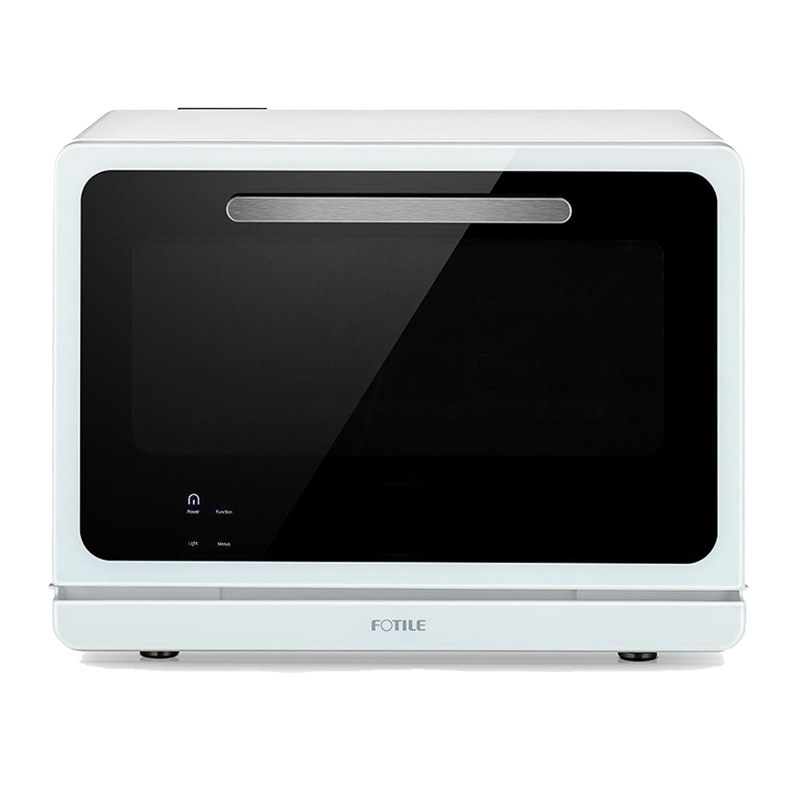
Steam meets heat in the ChefCubii 4-in-1 steam-combo oven by Fotile. Functioning as a steam oven, a convection oven, an air fryer, and a dehydrator, the ChefCubii allows users to play with their cooking without having to use more than one device. The oven includes 40 preset cooking menus for those looking for a guided experience, as well as a large see-through window for easy viewing. A large portable water tank powers the Steam-Bake mode, which creates moisture in the oven and combines with convection baking for even cooking. The clean design boasts a three-layered door, a 1-cu.-ft. large-capacity interior, and orange ring light control knobs.
Sharp Supersteam, Super Heated Steam and Convection Built-In Wall Oven

This oven asks its users to rethink how they cook with steam. That’s because the steam in most ovens only reaches a temperature of 212 degrees, but SuperSteam+ can drive steam up to 485 degrees. With this in mind, users can essentially have three ovens in one: a steam oven, a convection oven, and superheated steam. The Smart Cook feature on the oven’s touchscreen interface offers built-in recipes and pre-set cooking options, and menu categories and easy controls are also available. Additional settings include Steam Grill, Steam Roast, Gentle Steam, and Convection Broil, as well as options like Steam Proof, Keep Warm, Simmer and Sauté.

Samsung Smart Freestanding Gas Range with Flex Duo

Everyone is looking for a little more flexibility when it comes to cooking. This 5.8-cu.-ft. oven from Samsung gives cooks just that, with a Dual Door that allows them to cook two dishes at different temperatures or access just the top oven or full oven. Wi-Fi connectivity makes it easy to control the oven from anywhere, and inside, two powerful convection fans circulate heat, cook food evenly, and cut down on cooking time. Other features include a soft-close door, a glider rack, and a 18K BTU dual-power burner.
Signature Kitchen Suite Steam-Combi Wall Oven
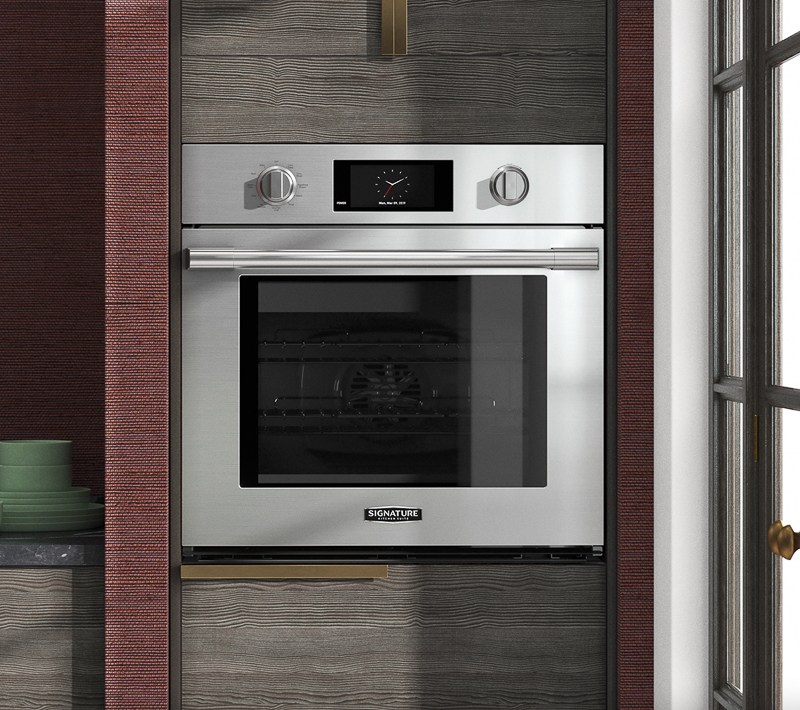
This modern wall oven utilizes a third element and fan to cook food quickly and evenly on every rack. Signature Kitchen Suite’s Steam-Combi feature boasts the precision of sous vide cooking through the power of steam, and can be remotely monitored through the SmartThinQ app. Oven features include convection bake, convection roast, bake, broil, proof, steam cook and RapidHeat Roast+. For added convenience, the Speed Clean takes only 10 minutes to leave the interior of the oven shining.
GE Trattoria Pizza Oven

Few things are as disappointing as putting in the time and labor for homemade pizza, only to have it come out less than perfect. Enter the Trattoria Pizza Oven by GE, which features a pizza oven on top and a convection oven on the bottom; it was slated to be available in late November. The pizza oven component heats up twice as fast as traditional pizza steel for fast, efficient results. The precision surface sensor is mounted directly beneath the cooking surface and detects the oven temperature to notify cooks when to put in a new pizza. A reflective aluminum shield redirects heat downward to more effectively brown crust and toppings, and the cooking surface is a quarter-inch-thick plate made of aluminum alloy to allow for rapid heat conduction and precise temperature control.
Wolf E Series Built-In Double Oven

Customization and ease are the main sellers of this built-in oven from Wolf. The large, full-color touch screen and stainless touch controls feel intuitive and are simple to manage, and are Wi-Fi-enabled so users can remotely preheat, select modes, and adjust temperatures. Ten cooking modes developed by Wolf chefs are available, including Bake, Broil, Convection, Convection Roast, Dehydrate, Gourmet, Proof and Roast. In Gourmet mode alone, nearly 50 presets are available to make cooking fancier dishes easier and more accessible for everyone.
GAMING UPGRADES
Beyond the Console
How to sell the ultimate gaming experience.
By BRANDON WHITE, Director of New Product Development, Vanco
If you think videogames are for kids, it’s time to level up your perspective. Research from GWI indicates that gamers are in their mid-30s on average, and they have the income and passion to invest in the hobby. Console gaming is big business, and it’s growing.
When it comes to the newest consoles, it can sometimes seem as though all the opportunity is in the secondary market: Due to supply chain issues, most dealers just haven’t been able to keep any current-gen systems on their shelves, even a year out from their initial release. Whether or not you’ve been able to stock current-generation consoles like the PS5, Xbox Series X|S, or Nintendo Switch OLED Edition, however, there is ample opportunity for dealers to benefit from the gaming boom. Wherever they get their console, gamers are likely to need an all-new setup to use it to its fullest advantage.
What’s Driving the Need to Upgrade
That assertion begs the question: What’s wrong with their old setup? In a lot of ways, current-gen consoles are incremental upgrades – some of them even use the same controller as the previous generation, and Sony and Microsoft are still issuing new game releases on both generations. The people who are lining up to purchase new consoles are doing so to get the advantages of new technical capabilities that have to be supported by every device in the signal chain to work.
Foremost among the new features are the current-generation console visual specs, made possible under the HDMI 2.1 standard. Both the Xbox X|S Series and the PS5 offer support for Variable Refresh Rate (VRR), Quick Frame Transport (QFT), and Auto-Low Latency Mode (ALLM). All these features add up to make games look and perform better. Here’s how:
- ALLM automatically sets a connected, compatible display to its lowest latency.
- QFT reduces the latency between the console’s graphics processor (GPU) and the display.
- VRR constantly adjusts the frame rate of the display to match the frame rate output of the console’s graphics processor (GPU). Unlike normal videos, games don’t have a fixed frame rate because their video feed is being generated interactively in real time. Without this feature, the GPU can fall out of sync with the display’s refresh rate, resulting in chunky visual artifacts also known as “screen tearing.”
Current-Gen Displays
In order to actually use all these new features, the consoles must be connected to a display with an HDMI 2.1 connection. If the customer is in the market for a new TV, there are additional considerations that can significantly improve the gaming experience.
First up: size. “Buy the biggest screen you can afford” is the common rule of thumb, but there is actual math you can use to help assess a customer’s needs. A screen’s recommended size is based on a number of factors, including resolution, farthest viewer, and task. In the case of gaming, people are making analytical decisions based on what they see on-screen, not just passively viewing like they would a movie or TV show. That means they need a larger screen, closer viewing position, or both. AVIXA, the Audiovisual Integrated Experience Association, offers a free Display Image Size Calculator on their website that can help dealers make the right recommendations.
Gaming consoles offer some of the most impressive ultra-high-resolution content out there. The PS5 and Xbox Series X are both capable of outputting 8K video at 60Hz, so they’re a perfect match for the cream of the display technology industry. The customer’s needs will vary depending on their system, though lower-cost current-generation systems like the XBox Series S and Switch don’t natively output 4K, but they will automatically scale to that resolution.
Because gaming requires users to examine the screen in intense detail for hours at a stretch, the ability to fine-tune settings for viewer comfort is important. Each user must find a balance between producing enough light and contrast to discern every detail without straining their eyes. There’s no magic preset – the right settings depend on the individual and the brightness of the room.
Not all displays allow the user to adjust picture settings in HDR mode; for gaming, make sure any screen you recommend offers the ability to create custom display settings. If a TV will be used for gaming as well as other applications, like watching movies or sports, look for displays that offer the ability to save custom profiles alongside presets for sports and film.
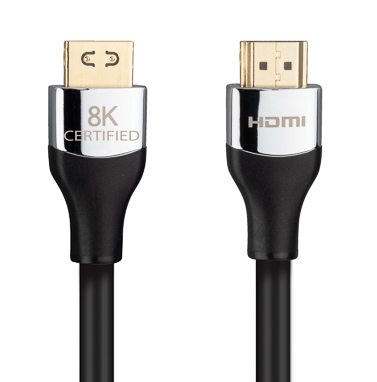
Cable Considerations
If the customer has a state-of-the-art display and a current-gen console, they can expect to be wowed by stunning visuals and smoother-than-ever gameplay, right? Well, no – not unless they’ve also upgraded the other links in the signal chain. If the customer is planning to connect their new gear with old cables, they’ll be missing out on most of the features they upgraded to get. ALLM, QFT, and VRR all require certified Ultra High-Speed HDMI cables.
When considering 4K to 8K resolutions and current-gen console refresh rates, consumers should also be aware of the length limitations of copper HDMI 2.1 cable runs. HDMI doesn’t specify absolute maximum lengths – that is established during the certification testing of a manufacturers’ actual products – but their own lab testing indicates that Ultra High-Speed HDMI 2.1 copper cable can run up to 16 feet (5 m) while still meeting the spec. Only certified cables will reliably achieve that result. If the customer is planning to position their console any farther from their display, they’ll need an active optical fiber solution to deliver the video signal.
Audio for Immersive Gameplay
Both Microsoft and Sony have invested a lot of R&D into making gaming an immersive, multi-sensory experience. To that end, they’ve both added three-dimensional audio capabilities to their current-gen consoles. This feature is intended to improve player performance – gamers will be able to hear enemies creeping up behind them and know, based on the object-based audio delivery, in which direction to turn. They must have compatible audio endpoints to deliver this experience, though, and there’s no universal standard for immersive audio.
Microsoft has adopted the popular Dolby Atmos standard for the Xbox X|S, which is available in a wide variety of audio products from various manufacturers, from installed speakers to soundbars to headphones. Sony took a different path. They developed a proprietary 3D Audio engine, Tempest, for the PS5. At launch, Tempest was only fully supported on headphones, and as of now, support on external speakers is still in beta. The upshot is that the right audio setup is going to depend on the customer’s gaming and console preferences.
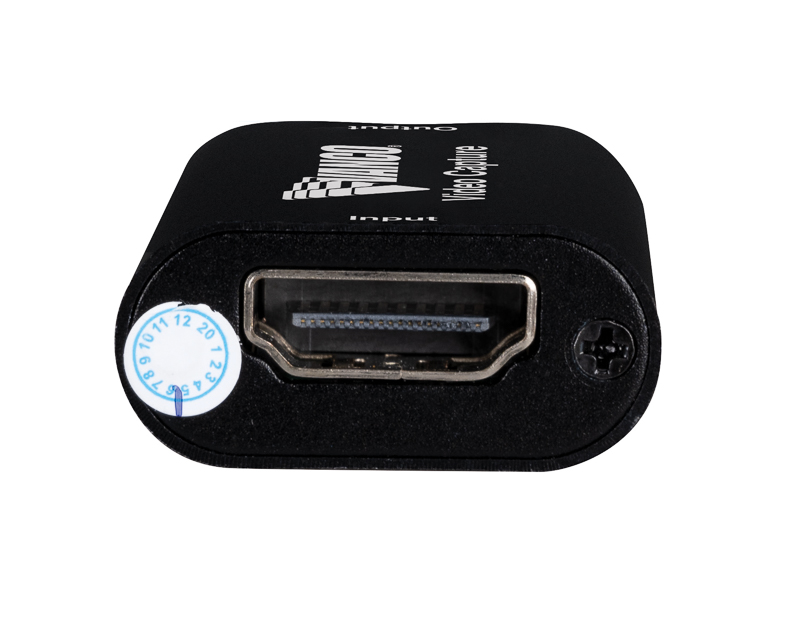
Router Upgrades
Serious gamers – especially those who compete online or play massively multiplayer games – may need more than their standard ISP-furnished router as well. Gaming isn’t necessarily a bandwidth hog – it all depends on what’s being played. That said, network latency can be make-or-break in competitive gaming. If a customer is used to relying on an unmanaged network for gaming – or even worse, a Wi-Fi connection – it’s time for an upgrade.
Network latency has the most impact on reflex-based games like First Person Shooters (FPS). For Call of Duty or Fortnite enthusiasts, a ping time that would be perfectly acceptable for video streaming, conferencing, or even other games can put them at a serious competitive disadvantage. 20 ms is a recommended target. That’s a low latency that can’t be reliably achieved with wireless connections, and will only be achieved with a wired connection if the customer has a managed switch with the ability to reserve bandwidth for their gaming system. 30 Mbps per gaming system plus overhead should meet their needs.
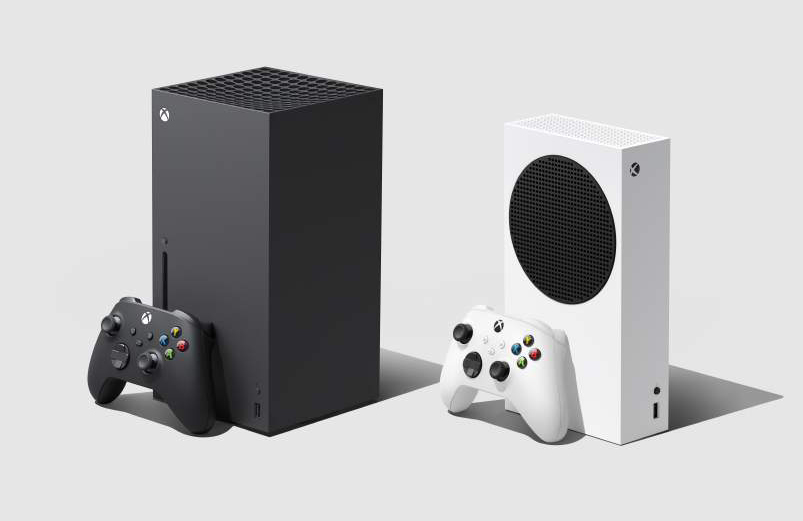
Xbox Series X (left) and Xbox Series S (right)
Capturing the Action
About of quarter of the console gaming audience sometimes live-streams their gameplay, which introduces an array of additional considerations. The Xbox X|S and PS5 both allow pushbutton streaming directly from the console, but that basic functionality doesn’t account for some of the activities that are at the heart of livestreaming. In order to sync a livestream with chat and alerts from the streaming platform – and add production effects and scene changes to the stream – the customer will need a capture device.
If the player can’t engage with their audience, thank viewers, answer questions, and follow tips, what’s the point in being live? Using a capture device and a laptop or monitor, streamers can set up a second screen as both a confidence monitor and audience engagement dashboard. There are both dedicated gaming capture devices available, such as the Elgato HD60+, and pro-quality AV capture devices like the Vanco 4K to USB Video Capture device.
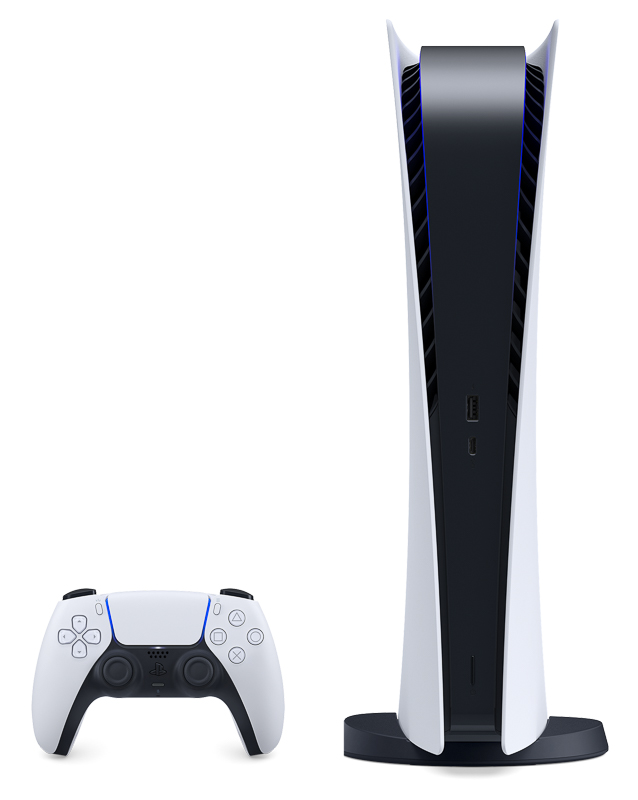
Sony PlayStation 5
Get on the Leaderboard
Gaming isn’t just about the console and the screen. It’s an immersive experience supported by a whole ecosystem of devices. This is a valuable market that requires the very finest technology components to reach its full potential. Even setting aside the consoles themselves, there’s plenty of opportunity for dealers to achieve a massive high score as players upgrade.
Key Takeaways:
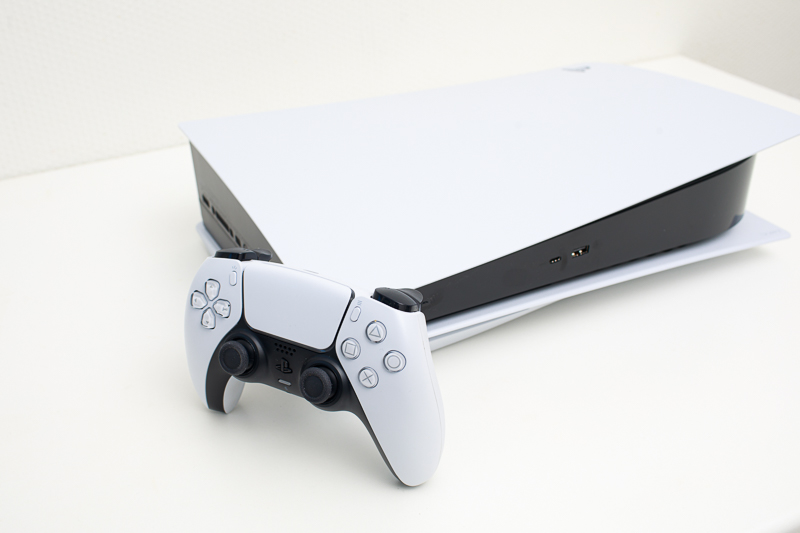
- Customers need a lot more than a new console to fully upgrade their gaming experience
- The display, cables, audio system, and network equipment must all be compatible to take advantage of the latest technical advances in gaming
- Needs and compatible hardware will vary by console and gaming habits

WORK-AT-HOME TECH
Work-At-Home Tech
Remote and hybrid professional scenarios are here to stay, and consumer electronics manufacturers are meeting the moment with a slew of new domestic office devices.
By EGON SANDERS
Of course, the freedom of working from home comes with some tradeoffs — not only the serendipitous socialization, communication, and collaboration that comes from seeing co-workers on a regular basis, but also access to the infrastructure and office supplies and technology of the workplace. Given this shift, manufacturers across the consumer electronics sector are both releasing new products specifically designed for remote work and videoconferencing, but also repackaging existing products with highlights on the work-friendly features. With an eye toward the present and future of work, we’ve put together a list of new gear that will make the work-from-home experience more productive, healthful, and enjoyable.
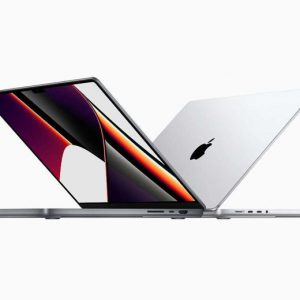
MacBook Pro M1

VisionTek VTWC40
WorkStation: The essential tool for most remote workers is a solid computer. Obviously, this will depend largely on what an employer is willing to provide (or subsidize), but for most folks, the laptop will provide the most flexibility, especially in home environments where the “desk” can change hourly from the kitchen table to the patio to the car. The typical tradeoff in power (versus a desktop computer) is worth it for the flexibility of being able to move about the house to mix up both work environment and posture. Apple’s new MacBook Pros with M1 or M1 Max chips (depending on needs) are great choices, as is the Razer Blade 15 Studio Edition for PC users (or the Acer Swift 3 for those on a tighter budget). Pair any of these with an external monitor like the Dell 24-inch Ultrasharp U2415 and you’ll have plenty of space to spread out and get comfy (digitally speaking).
Being Seen: The second-most crucial piece of technology for many is the trusty webcam, a gadget that’s been around for decades but is now getting its time to shine. Logitech has a lineup of webcams for nearly every use case, with the 922 Pro Stream being a solid all-arounder at a good price. Razer’s Kiyo VisionTek’s VTWC40 offers an excellent 1080p picture and a built-in ring light, while the Anker PowerConf C300 has an ultra-wide 115-degree field of view. For a step up, the Plantronics Poly Studio USB 4K video bar uses audio-enhancing and video-tracking algorithms to help meetings go more smoothly — particularly for those who move around a lot, or need a camera to accommodate multiple people in the room.

Jabra Evolve2 75-tb-beige
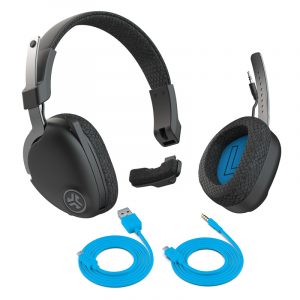
JBuds Work 4 with Accessories
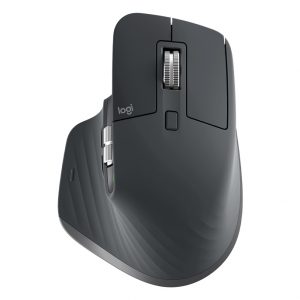
Logitech MX Master 3
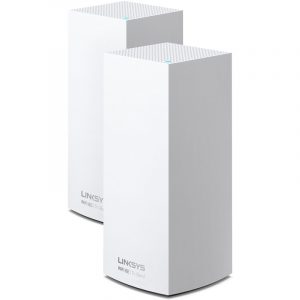
linksys Atlas Max 6e
Audio File: A good, comfortable pair of wireless, noise-cancelling headphones are handy for those never-ending Zoom calls. On the high end, Sony’s WH-1000XM4 is a perennial favorite, as is Sennheiser’s Momentum 3; both are over-the-ear models with comfy, snug fits and top-tier noise-canceling tech. For a more low-profile earbud style, Apple’s AirPods Pro are obviously a popular choice and work particularly seamlessly with Apple products, but there are other options as well, including 1MORE’s Stylish True Wireless, the Bose QuietComfort, Panasonic RZ-S500W, or Earfun Air Pro. For those who prefer speakers to headphones in order to better hear things like kids and doorbells (for better or worse), the Presonus Eris E3.5 and Audioengine A1 are both great options that provide fantastic sound quality while occupying a relatively small footprint on your desk. Those looking to be heard loud and clear by their remote co-workers might want to check out headset options such as the JLab Talk Go, Raycon’s The Work, Cyber Acoustics HS-2000, Jabra Evolve2 75, or the JBuds Work. The Jabra Evolve2 75 is optimized for videoconferencing, with a dedicated Microsoft Teams button to activate that service as well as an LED light that indicates you’re on a call. Meanwhile, the JBuds Work allows one earcup to be removed so you can easily hear those around you, whether you’re working from home or from the office.
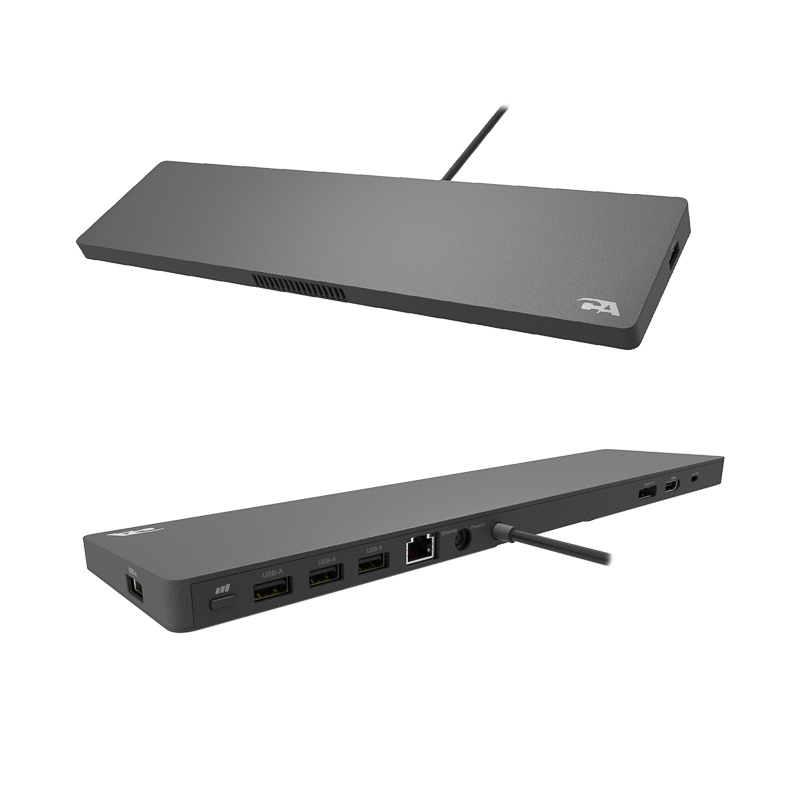
Cyber Acoustics DS-2000 laptop docking station
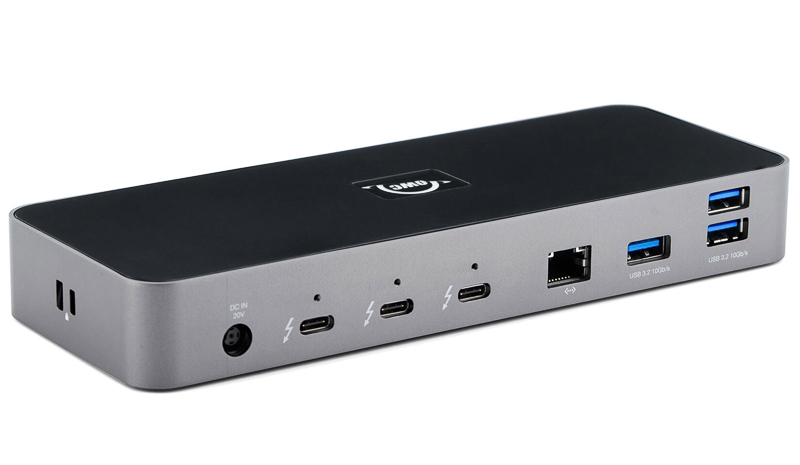
OWC Thunderbolt Dock 2

Plantronics Poly Studio USB 4K
Staying Connected: Of course, a strong, stable Internet connection is essential for nearly everyone working remotely. The ability to move about your apartment or house is a great way to break up the workday, and to this end, a mesh network like the Orbi Mesh, Linksys Atlas Max 6E, or TP-Link Deco S4 will let you maintain great connectivity no matter where you are in your home. Likewise, a Wi-Fi 6 router like the TP-Link Archer AX50 or Linksys Hydra Pro 6E will give you the best wireless speeds your ISP is capable of, and Wi-Fi 6 has a broader connectivity range, meaning it might just cover your whole apartment (perhaps with the help of a simple Wi-Fi extender, like the TP-Link N300).
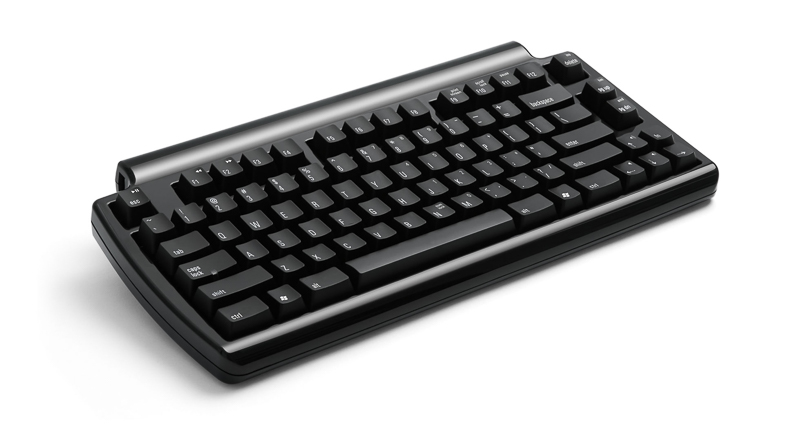
Matias Quiet Pro
Input: When you spend most of your workday sitting at a computer, it’s nice to use comfortable, reliable input devices that work with you rather than against you. In terms of mice, Logitech once again dominates the market — from their affordable Logitech M720 Triathlon to their higher-end MX Master 3, there’s something for everyone. Keyboards are having something of a renaissance as well, with mechanical keyboards from the likes of Keychron and Das Keyboard 5QS providing the sort of klackity, mechanical keyboard experience that has come back into fashion for its tactile, satisfying feel. For those who prefer (or, for that matter, whose Zoom coworkers prefer) something quieter, the Matias Quiet Pro keyboard is an excellent option with a pleasing key-feel.
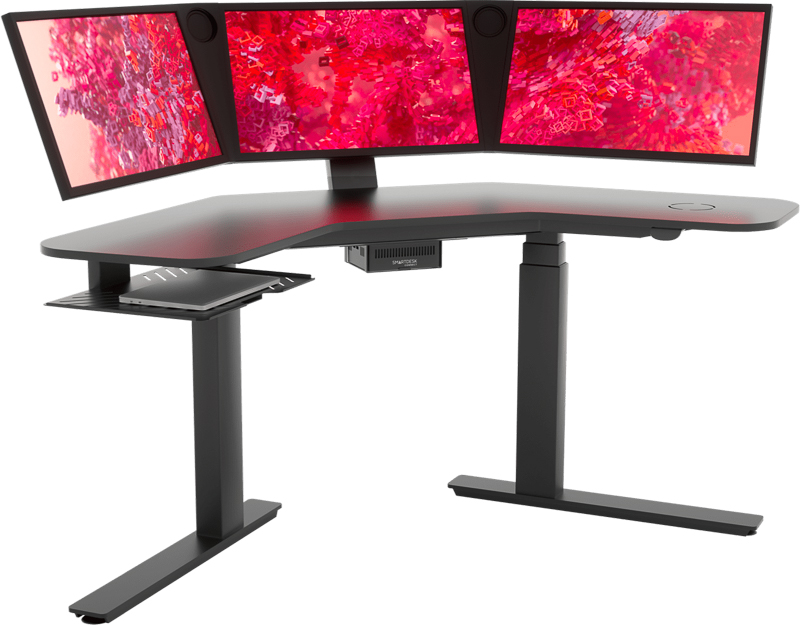
SmartDesk-Connect
Extra Credit: Of course, there’s plenty more that can improve your work-from-home experience. A dual sitting/standing desk like the Autonomous Desk, for instance, is great for getting off your butt; the SmartDesk Connect goes even further, with three 4K UHD monitors, sit/stand functionality, wireless charging, and speakers all built into the desk — and all powered by a user’s laptop. For those looking for less of a lift (har har), minder’s Laptop Tower II stand will elevate your laptop to standing height on any desk, while Twelve South’s Curve Riser handily lifts your monitor to open up some desk space, and looks good doing so. (Purple’s Double Seat Cushion, meanwhile, can help with all that sitting.) A USB hub like the Anker PowerExpand or Cyber Acoustics DS-2000 laptop docking station (or an upgrade choice like OWC Thunderbolt Dock) make plugging into peripherals like webcams, hard drives, and multiple external monitors a breeze, while a fast external SSD like the G-Drive Pro SSD, Kingston XS2000, or the speedy OWC Envoy Pro Elektron SSD will give you more than enough disk space to grow into.
Not everyone will need everything listed here, but most of us can benefit from at least some of these sorts of upgrades. An investment in your home office environment is an investment in both your physical and mental health — and you might even be able to get your employer to pay for it.
HOLIDAY TIPS
Happier Holidays
Five tips to boost your end-of-year sales.
By AMANDA NARCISI
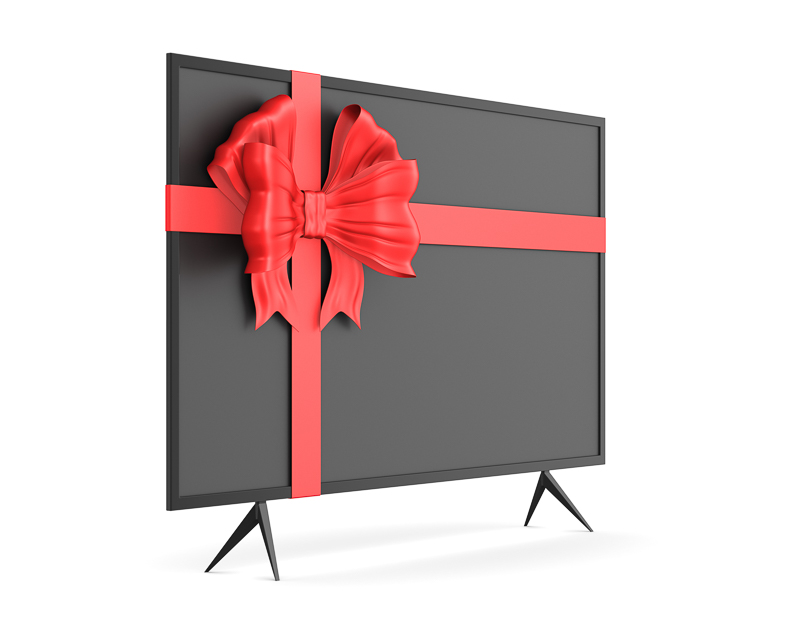
The holiday season seems to sneak up on business owners every year. It’s the most critical time of year, often starting or ending the fiscal year in the black. Marketing effectively during this time is especially important, because there’s a lot of competition, but here are a few tips to help you cut to the chase and drive more customers to your store or site.
Spread the word.
This holiday season, consider reaching your customers everywhere. The holiday season is an excellent opportunity to start an email list if you don’t already have one, and email the perfect format in which to highlight specific new tech products, updates to your inventory, in-store events, or sales. Print items can be created and ordered through sites like Canva, then either sent out via snail mail or placed in strategic locations around your store or shopping center. What’s more, email newsletters and social media posts can be scheduled, saving time during the busy season.
Add a twist to holiday visuals.
Visuals are essential, not to mention fun, during the holiday season. Consider changing background colors when highlighting technology hardware like backup drives or headphones in ads, emails, or product pages. Red and green are traditional, but here’s a quick tip: Try deeper shades of these colors to add a more sophisticated (and distinctive) look to your ads or signage. It’ll turn heads. If you don’t have a storefront, consider new banners or images for your website that highlight different categories of technology such as headphones, smart devices, and accessories.
Make everything accessible.
Research which hot technology products are on everyone’s list, and rearrange your in-store displays to highlight them near the front of the store, if not in the window. Find unique ways to show off technology hardware and interactive displays where customers can try out items. For learning gadgets like Sphero, you can set up an area for kids and adults to try out the robotic toy. Customers tend to purchase higher-ticket items when they can feel and test out the technology. As you make new displays, share them on social or in email newsletters for customers to see.
Sweeten the deals.
Once you send out the emails or flyers from above, consider adding a bonus to them; an extra discount, a gift card bonus, or a swag item with your logo or information on it. For example, purchase USB thumb drives or accessories with your business information to hand out with purchases; the customer will be reminded of you and then make repeat visits; it’s an investment in the future. Sales on their own during the holiday are nothing to be sniffed at, but adding an incentive like additional money off will have the customer buying from you instead of your competitors.
Put on a show.
Demonstrating products can pay off by showing how the technology is used or how it can benefit your customers. Try it for the first time during the holiday season. There are a few ways to perform a demonstration; you could hold it in person at certain times at your store. Demonstrations are ideal for home audio or headphones, learning toys, and wearables. Another idea is to demonstrate on camera and release the videos on social media or in an email newsletter.
The holiday is a fantastic time for a small business, but it’s also the most stressful time for getting customers in the door and making sales. These tips, even if you try just a couple of them, will make everything go a little more smoothly.

UNBOXED
Harley-Davidson Goes
Whole Hog for E-bikes
A spinoff of the iconic motorcycle brand
makes an impressive debut.
BY JOHN R. QUAIN
The e-bike was a glimmer in Harley-Davidson’s eye even before the pandemic made power-assisted bicycles such a hot item. Started in 2018 and later spun out of the Milwaukee motorcycle maker, the e-bike company is officially known as “Serial 1 Powered by Harley-Davidson,” combining the resources of the 118-year-old brand with the agility of a startup. The first Serial 1 bikes out of the garage demonstrate design prowess and make for an impressive debut.

Not unlike the headphone craze, companies have been rushing into the e-bike market, including traditional bicycle makers like Cannondale, Specialized, and Trek as well as more recent e-bike specialists like Rad Power Bikes and Biktrix. However, in our testing, we found the Serial 1 Rush/Cty model manages to stand out in a crowded arena. It’s a big, bold bike for urban commuters that is designed to be as maintenance-free as possible thanks to technology like an automatic transmission/gearing and carbon fiber belt drive system; no more fiddling with derailleurs and chains.
The Serial 1 Rush/Cty is not as lissome as e-bikes like the 45-pound Charge Bikes City but it’s not as beefy as off-roaders like the 65-pound Biktrix Stunner X. It stands somewhere in the middle with 2.4-inch-wide street tires, which are wider than typical tires on commuting bikes but more refined than the knobby fat tires on cross-country bikes. It helps give the aluminum Serial 1 a big-city feel, along with the in-tube battery and integrated fenders and cargo rack. Unique features include a small, lockable glove compartment that is large enough to hold a small water bottle. All the wiring is routed inside the frame, keeping things neat and tidy, and a suitably bright LED headlamp is included.


During several days of testing, the Serial 1 Rush/Cty bike proved to be an extremely stable ride, aided and abetted by those wider tires and a Brose mid-drive motor. In spite of its full size, the Rush/Cty was responsive and easy to handle, with a comfortable upright riding position and wide-grip handlebars. Dodging potholes was a snap, and the bike stayed steady under panic braking and on blustery days cycling through concrete canyons.
On the downside, some riders will find the Serial 1 delivers a rather harsh ride. At speed, severe bumps can jolt the handlebars out of your hands if you’re not attentive. A front suspension fork would go a long way to remedying the situation. Also irritating is that the only way to change the cadence or rpm of pedaling is to stop, open the Enviolo smartphone app and change the pedaling rpm (it’s set at 75, but we found 60 offered a better pace and more resistance).
The electric-assist only works while you pedal (there’s no throttle for full electric power) and cuts out when you hit 20 mph, so when going downhill it can become harder to pedal when you exceed that speed. There are four ride modes, and depending on the mode, your battery mileage will vary. For example, during one ride, Tour mode registered 31 miles of range while Sport mode dropped the estimated range down to 14 miles. However, even without the electric assist, you can still pedal around on Serial 1 Rush/Cty with little resistance.
The Serial 1 Rush/Cty is a premium bike and is priced accordingly at $4,999. There’s also a Rush /Cty Speed version that goes up to 28 mph, for a whopping $5,599, but it’s also pedal-assist only, no throttle included. Still, the Harley-backed brand is comparable to competition from well-regarded models from traditional cycle makers like Netherlands-based Gazelle. The Gazelle Ultimate H380, which also uses a belt drive and integrated design with a mid-drive motor, is $4,249, for example. Still, the Serial 1 Rush/Cty has its work cut out for it as it tries to carve a niche for itself in the congested e-bike market.
Serial 1
Powered by Harley-Davidson
Rush/Cty e-Bike
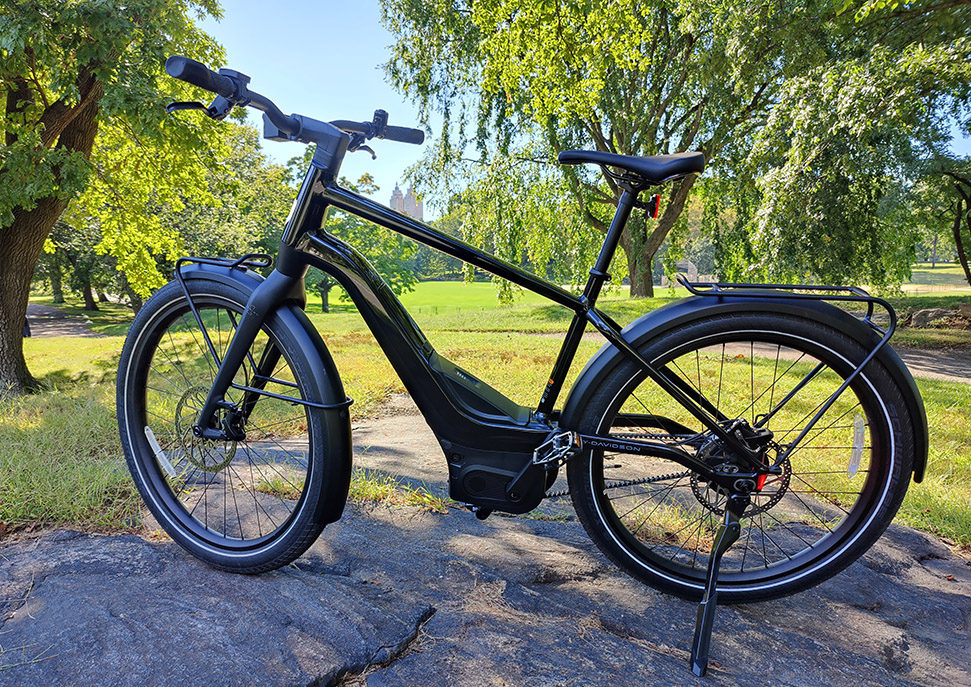
- Price: $4,999
- Battery: 706 Wh
- Max estimated range: 25-115 miles
- Max assisted speed: 20 mph
- Motor: Brose mid-drive, 90 Nm torque
- Gearing: Enviolo Automatiq constantly variable transmission;
Gates belt drive - Wheel diameter: 27.5 inches
- Weight: 59 lbs. (large frame)

ESCORT MAXCAM
Escort MaxCam 360c Radar Detector: It’s a Dessert Topping and a Floor Wax
Simply being able to detect all the radar bands police use to scan roads isn’t enough these days.
BY JOHN R. QUAIN
As road data in cities like New York can attest, traffic is on the rise —
along with car sales and prices. Not surprisingly, accessories like radar detectors
are experiencing a concomitant bump in sales, and many, like the Escort MaxCam 360c we recently tested, are becoming increasingly more sophisticated.
Simply being able to detect all the radar bands police use to scan roads isn’t enough these days. Radar detectors also have to be connected to the cloud to obtain red-light and speed camera locations, get software updates, and trade crowd-sourced information about hazards ahead. Radar detectors also have to connect to smartphone apps, include Wi-Fi and Bluetooth, and come with integrated dash cams. The latest top-of-the-line Escort MaxCam 360c has all of this, and more.
Although others, such as the Cobra Road Scout Elite, have already integrated a dash cam into a radar detector, the MaxCam 360c is Escort’s first model to do so. On the radar side, it scans for all the available bands using dual antennas and a Lidar detector to cover what’s ahead and what’s behind you on the road. That proved helpful in registering law enforcement cruising up behind us on at least two occasions. Directional arrows on the detector’s display tell you where the radar is coming from, including radar speed signs used around construction sites and school zones so that you know to slow down earlier.
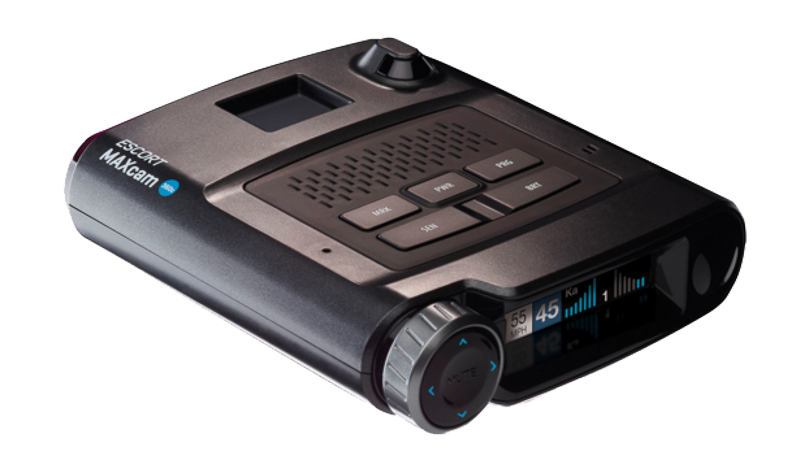
On the video side, the dash cam records scenes in 1440p, and the clips we sampled, even those recorded at night, looked crisp and clear. The MaxCam 360c is set to record continuously by default and will also permanently save “events” triggered by an internal accelerometer, should you be involved in a fender bender. You can upload videos to the cloud, view them on a smartphone, or simply transfer clips using the microSD card.
Over more than 800 miles of road testing, we found the Escort MaxCam 360c was a reliable companion, faithfully reporting K and Ka band speed traps. In terms of sensitivity, it appeared to deliver warnings just a half second or more before an older Escort Redline detector. These anecdotal results were based on detecting regularly stationed speed traps. Of course, there were also several surprises, including laser hits, but the alerts were early enough that on at least one occasion we let another driver cruise past us only to witness that car being pulled over moments later by police.
While no detector is perfect, the Escort MaxCam 360c seemed to keep false alerts (such as those from security and other wireless systems) to a minimum, automatically muting about 50 percent of the false readings we usually get along one route. The company also employs filters to minimize potential interference from in-vehicle technology like blind-spot detection and collision-avoidance systems. We found no problems with any driver-assistance systems.
The Escort MaxCam 360c is easy to install using a supplied suction windshield mount. It’s also relatively simple to operate using a dial with an embedded four-way directional pad on the left-hand side to allow you to cycle through menu options like volume levels.

For more control, there is Escort’s associated Drive Smarter app, which includes live traffic data and navigation. It can also be used to take a quick picture using the detector’s camera or to save a video clip. If you’re quick, you can also use the app to report a construction area, speed trap, or traffic jam to other Escort users via the cloud. Conversely, it will speak to you, warning there’s a “red-light camera ahead” while you are driving. In general, we found the red-ight camera alerts to be accurate, although like other apps and detectors it will sometimes alert you to cameras positioned on adjacent roadways rather than the highway you’re actually on.
The Escort MaxCam 360c is a full-featured detector and is priced accordingly at $850, pitting it against the likes of the Valentine V1 ($499) and Uniden R7 ($600). While the MaxCam 360c is considerably more expensive, none of the top-of-the-line competitors include a dash cam. Furthermore, with fines in many states costing hundreds of dollars – plus surcharges and points that raise insurance premiums – the price tag may seem well worth it to many drivers. While pandemic-era sales are difficult to predict, the radar detector market is expected to grow from $343.1 million last year to $463.7 million by 2028, according to Fortune Business Insights. But no matter how large the market gets, we expect the Escort MaxCam 360c is going to be a significant player going forward.
Escort MaxCam 360c
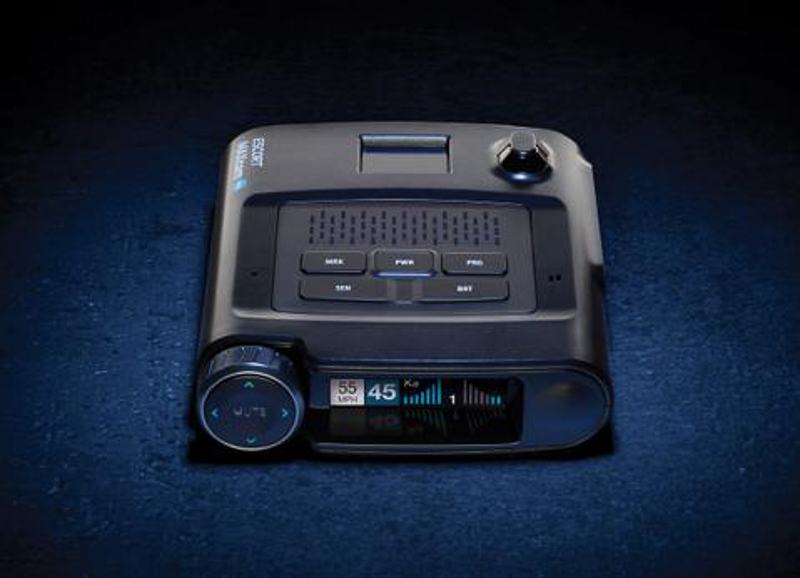
- Price: $850
- Features: Radar detector and dash cam
- Radar and laser bands: K, Ka, X, and lidar
- Included: Windshield mount, 12-volt adapter and cable, 16 GB microSD card, and traveling case
BLOGGING 101
Storytelling Your Store
How to create a blog that will drive customers onto your site (and into your store).
By AMANDA NARCISI

Blogs can add traffic to both your website and to the front door of your store, but sometimes the hardest part is knowing where to start – and then, once you do, how to convert those posts into buying customers.
Why add a blog to your website? Here are two big reasons: Blogs help you build your brand and reach effective search engine optimization (SEO) through compelling content. Building your brand is essential in the beginning not only to introduce yourself to new customers, but also to keep existing customers from seeing a “BestBuy.com” result after a Google Search instead of your website. Using blog posts to build a brand also creates relationships and trust with customers, since they’ll remember you for more than just trying to sell them stuff.
Adding a blog can require some tech knowledge, but this article will forego the nitty-gritty specifics because it depends on how you’ve set up your website. Chances are you already have this option if you’re using a site-builder tool like Squarespace or Wix, but it’s also a standard option for most web development scenarios.
Instead, this article will focus on the types of blog posts that work best for small businesses, including retailers, and what to put in them.
Let’s start with these different types of blog posts and how they can help your business:
Storytelling – Every business has a story behind it. Is your store a family business, a lifelong dream, or simply built out of your fascination with technology?
Teach Something – The informative blog post is a perfect spot to demonstrate your technology or a piece that you sell. It’s also a great place to offer advice: explainers on how to set up a smart speaker, or what acronyms like WiSA mean. The informative blog piece doesn’t necessarily need a lot of text; photos with some pithy captions and videos with short intro text will suffice.
Offer a Point of View – This can be a product highlight, review, or thought leadership editorial. The last one offers the opportunity to introduce and discuss trends that will get people talking about, say, different tech formats, the need to upgrade, and even the state of customer service. The idea is to get potential customers thinking about going into your store, and bringing them into the discussion is often a good way to do it.
Profile Someone – Interview the audio engineer behind a new amp, or a sustainability expert who can speak to the advantages of eco-packaging or recycling, or even the oldest salesperson on the store floor. Making a human connection always offers instant appeal to readers.
Once you have an idea of how many posts you would like to add per day, week, or month, create a schedule to post. You don’t have to post every day. You can start small, like once a week, and grow from there. The main thing is that you post consistently every day, week, or whatever frequency you choose. As you write or create the posts, remember to insert calls to action, like inviting the customer to the store to try out the hardware you demonstrated, or ending posts with questions that spark discussion (“Are you going to buy the new iPhone 13 Pro or the Pixel 6 Pro? Discuss.”). Include videos and photos and add descriptive or identifying captions to the images. In terms of hyperlinks in the copy, they should be a mix of links to other posts on your site and outside sites with reputations for quality content with authority. You’ll also want to organize your posts into different categories (either product categories or topic areas) and tags. This will not only make it easier for people to find relevant content on your blog, but will also help with internal linking and search engine optimization (SEO).
A word about SEO: Unlike Search Engine Marketing (SEM), SEO is essentially a more organic and free way to get exposure from people as they surf online. While the specifics of how to optimize your posts so that they show up on the first page of search results on Google vary and depend on several different factors, the long and the short of it is that compelling content is another way for customers to find you. Make sure the content is good and original, that it uses popular keywords related to your content that people will be searching for, and that other reputable blogs link to you and you link to them. SEO is a serious thing, but there are plug-ins for your content management system (CMS), which is the platform you use to create posts, and other tools and services such as Moz that can help. You can even search for keyword strength on free sites such as Google Zeitgeist.
Starting a blog for your business might not have been in the original plans, but it is worth considering, as it can add value and drive customers to purchase from you.

SMART HOME
Supporting the Connected Home:
Adjusting Strategies
The need for tech support is rising as more IoT devices enter the connected home. It’s an opportunity for brands and retailers alike, as more IoT devices are installed in the connected home.
By PATRICE SAMUELS, Senior Analyst, Parks Associates
Consumer technical support needs are strongly influenced by the number and type of connected devices consumers have in their homes. More consumers working and attending school from home has led to an increase in computing devices being used in broadband households. As consumers adapt to doing more activities virtually, they encounter more technical problems. At the same time, device manufacturers are adjusting technical support strategies to support customers virtually.
Smart home devices are rarely purchased spontaneously, as Parks Associates research shows that 54 percent of consumers report conducting research before buying. Product features and functionality are the types of information most researched before device purchase. Additionally, 37 percent of consumers rely primarily on manufacturers’ websites for information on devices they plan to purchase, while almost half rely mainly on social sources such as online reviews and social media. It’s likely that consumers ultimately use multiple sources for product research as different sources will stand out for other things. For example, the manufacturer’s website likely has the most up-to-date details on product features, while social sources provide more insight into product experiences.
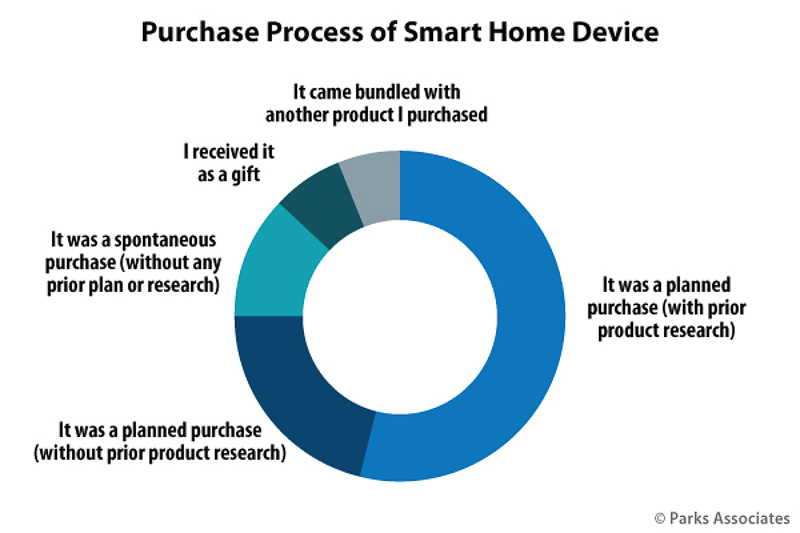
The percentage of consumers returning some CE devices such as smart TVs, smartwatches, and smart displays has also increased substantially over the past two years. About two to four percent of broadband households returned a smart home device over the past 12 months. Buyers return devices for various reasons — broken/defective products, difficulty installing the device, and the device not working as advertised are the top reasons.
Smart home devices are increasingly DIY setups. Parks Associates’ research reveals that 36 percent of consumers who set up smart home devices on their own experience difficulty – and they are most likely to experience trouble with smart water leak detectors and smart sprinkler systems. The likelihood of experiencing technical problems strongly correlates with age, with younger consumers more likely to experience a problem than older consumers.
Those experiencing technical problems seek help through various channels, including the manufacturer, product manuals, and support forums. The use of self-help apps and professional technicians is growing. Consumers have different channel preferences for resolving technical problems. Therefore, brands need to offer a variety of support resources. Brands must also take advantage of the growing popularity of support apps. These can provide better support experiences and improve over time using data analytics.

There is also significant premium technical support opportunity to promote business continuity and maintain employee productivity. Parks Associates’ research shows that 28 percent of U.S. broadband households report working from home more than before the pandemic. Nearly 50 percent of respondents spending more time working from home report slow Internet speeds hamper productivity. While attending school at home is expected to decline significantly as more consumers become comfortable with in-person schooling, remote work from home is likely to continue beyond the pandemic’s peak.
It is evident that new work-at-home and school-from-home activities make home network dependability more critical than in the past and drive a high willingness among consumers to pay for support services that facilitate this. Support services like AT&T’s ConnecTech and Verizon’s Tech Support Pro have new opportunities to support consumers’ unique virtual lifestyles. They also have the opportunity to partner with small businesses that are invested in services that promote business continuity as employees work from home.
For more information on the Parks Associates research study, Onboarding and Technical Support for the Connected Home, visit http://www.parksassociates.com/report/onboarding-tech-support. This primary research study of 10,000 broadband households addresses leading issues consumers experience with these devices and their preferred methods for support. This report examines approaches to providing positive experiences with elements of onboarding including installation and other strategies to ensure product and service reliability in the connected home.

THE BEST AND WORST OF 2021
The Best and Worst of 2021
STORY CONTRIBUTORS:
Egon Sanders, Tom Samiljan, Stephen Silver
A lot happened in 2021. Demand rose, but so did supply-chain slowdowns. More stores reopened than closed in 2021, but some of the closings, such as Fry’s, hit hard. While some live events restarted, others didn’t. Corporate governance improved, with a rise in women CEOs and sustainability initiatives, but that didn’t stop a rise in sea levels and data breaches. And speaking of data, it not only makes the Internet of Things (IOT) world go ’round, but will also continue to create ever-growing demand for chips, which brings us back to the shortage.
Whether we see this past year as a glass half full or a glass half empty, we can all agree on one thing: 2021 was certainly better than 2020.
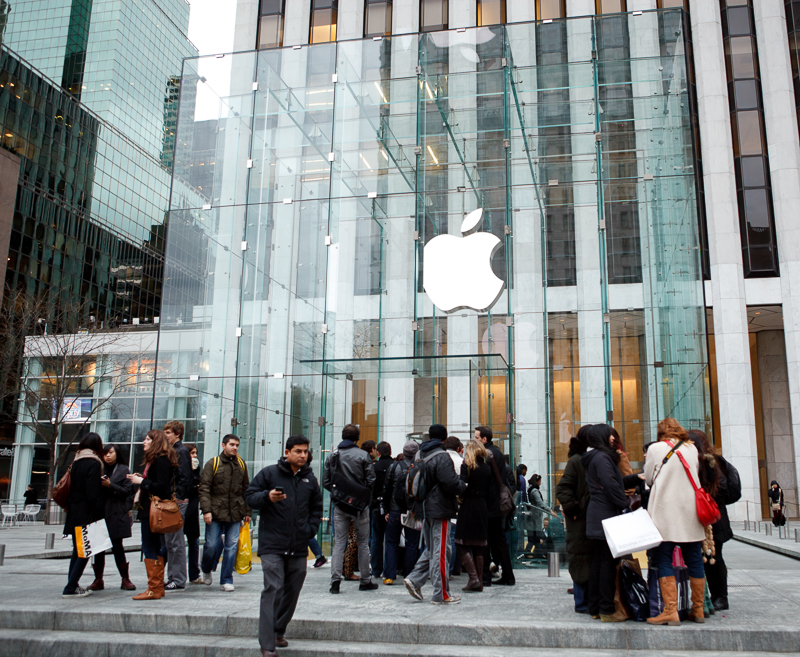
Best: Stores reopen.
The COVID-19 pandemic, and the resulting quarantine, led to many stores closing for a good portion of 2020, but towards the end of the year and early Spring of this year, when the vaccine rollout expanded to most of the adult population, most brick-and-mortar stores that were still in business fully reopened. The last of the Apple Stores that closed in the pandemic reopened in June. By June, per NPR, the retail industry was hiring people again at a record pace, even as job vacancies persisted. And IBIS World said in July that revenue in the consumer electronics stores industry was expected to grow 1.7 percent year-over-year over 2020.
With vaccines available now even to children, and international visitors allowed to travel to the U.S. since the beginning of November, it looks like there’s no turning back. In late October, the National Retail Federation estimated that holiday sales would be up by 10.5 percent, partly thanks to consumers confident enough to go to brick-and-mortar stores again. It turns out e-commerce fatigue is real, which can be a boon for brick-and-mortar retailers.
Yes, curbside delivery, e-commerce, and BOPIS retail are now all part of the retail mix’s new normal, but every smart retailer has evolved to handle it over the past two years.
While the pandemic is by no means over, with various supply-chain issues leading into a whole other series of headaches, the industry is beginning to approach something like normal.

Best: Demand and revenue continue to rise.
The early days of the pandemic led many to conclude that consumer electronics demand would crash due to economic uncertainty. But once it became clear that people would be stuck at home for an extended period, sales soon surged for a variety of products. Those who needed better computers and TVs for work-at-home setups bought them, while previously moribund product categories such as webcams experienced an unlikely comeback. Meanwhile, city slickers fleeing to the suburbs and the stay-at-home workforce began to upgrade their dwellings, which led to an uptick in appliance and smart device sales.
The high demand has continued in 2021. NPD Group forecast in August that sales for the industry would reach $113 billion, a seven percent increase over 2020. In September, the most recent month for which sales figures from the government are available, retail sales in the electronics and appliance sector dropped 0.9 percent month-over-month, but gained 17.3 percent year-over-year.
“Revenue growth in Q4 will be driven by higher prices in the industry’s most popular holiday categories like big-screen TVs, PCs, gaming, and audio. As consumers trade up to better, more feature-laden technology products, they will also have to contend with fewer and shallower promotions,” NPD’s Ben Arnold said in the August report.
The future looks bright for appliances, too. New-home sales were at their highest in six months for the month of September, according to the the U.S. Department of Commerce, while year-over-year growth in spending on home improvement and repair will hit nine percent in Q4, according to the Leading Indicator of Remodeling Activity (LIRA)

Best: A record number of women as CEOs
As of early November, 73 women were serving as CEOs of Fortune 500 companies. There’s still a long way to go – women only make up 14.6 percent of CEOs of companies on the list – but 73 women chief executives is the highest number ever.
In terms of female CEOs of Fortune 500 companies that touch on consumer electronics, appliances, or retail in some way, new names on the list include Karen S. Lynch, who in February took over as CEO of CVS Health, making it now the largest Fortune 500 led by a woman, as well as Lauren Hobart, CEO of Dick’s Sporting Goods and Linda Rendle, who heads up Clorox, which just unveiled a new line of air purifiers. In October, Denise Paulonis took the helm of Sally Beauty Holdings, which makes hair dryers and styling appliances, in October.
Existing female CEOs of Fortune 500 companies that touch on CE, appliances, and retail include Corie Barry, who became the first woman to serve as CEO of Best Buy in mid-2019. Also: Roz Brewer (Walgreens Boots Alliance), Christine A. Leahy (CDW Corp.), Lisa Su (AMD), Hayward Donigan (Rite Aid), Michelle D. Gass (Kohl’s), Lisa J. Alber (William Sonoma), Shelly R. Ibach (Sleep Number), Sherry S. Bahrambeyui (PriceSmart), Kathy Mazzarella (Graybar Electric), Andi Owens (Herman Miller), and frequent CES keynote speaker Mary Barra (General Motors).
And last, but certainly not least, the 2021 Dealerscope Most Powerful Women in Consumer Technology Award honorees featured several CEOs, including Embr Labs CEO Elizabeth Gazda and KMB Communications CEO Katye McGregor Bennett.
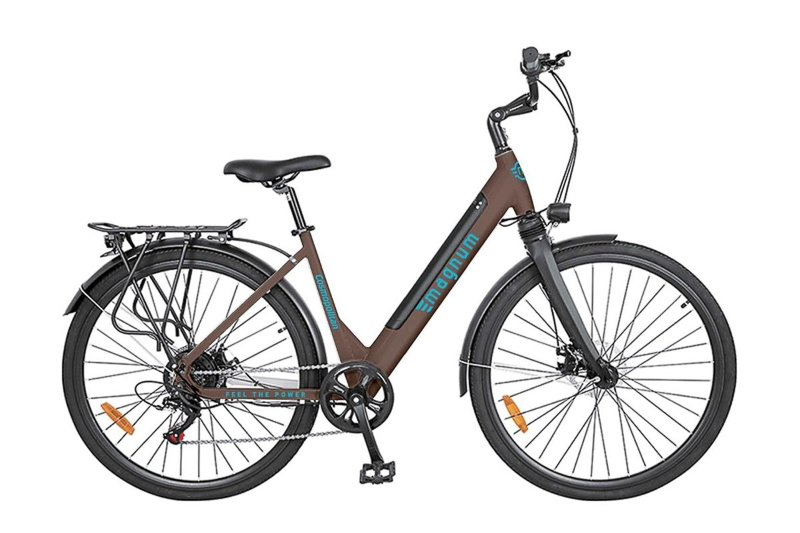
Best: The e-mobility category accelerates.
After years of hanging around as a product, e-bikes and e-scooters hit the mainstream during the pandemic due in part to avoidance of public transportation and higher gas prices.
Axios reported that U.S. cities were experiencing “a dramatic surge of e-bike usage,” with New York City legalizing battery-powered bikes in late 2020 following a push by delivery workers. Other cities have taken steps to switch their existing bike fleets to e-bikes, while e-scooter share services have started in more than 100 U.S. cities since 2017, according to the National Association of City Transportation. There are now stores such as FluidFreeRide in Brooklyn and Miami that are dedicated just to e-scooters.
According to NPD Group, e-bike sales surged 240 percent between 2019 and 2021, making them an even larger category than traditional pedal bikes.
“The new and returning rider may be concerned with a range of objections to ride again,” NPD Group said, adding, “the big hill, the long ride, and keeping pace with faster riders are all relieved by pedal assist. And, once riders try an e-bike, most seem compelled by the fun of it.”
E-mobility is the new must-launch category for consumer electronics and appliance dealers alike. In August, Best Buy started selling a selection of e-bikes and e-scooters from brands such as Bird, Unagi, and Segway-Ninebot, while both Abt Electronics and Nebraska Furniture Mart sell e-bikes, with the latter having a special section dedicated to Magnum Bikes, for example.

Best: Sustainability surges.
Across the industry, major companies are announcing goals for zero-emission operation, while taking steps that make a difference right now.
As part of a deal with electric SUV and pickup truck manufacturer Rivian, Amazon’s custom electric delivery vehicles hit the road in February in California, with plans to launch in 15 additional cities by the end of the year. Amazon (along with Target and Ikea) also vowed that its container-shipping arm would reach zero-carbon marine fuels by 2040.
Meanwhile, Walmart announced that it was partnering with Ford and Argo AI to launch a driverless delivery service in Miami, Austin, and Washington. And DHL Express, per Fortune, announced that it was ordering 12 all-electric aircraft, in order to reduce emissions.
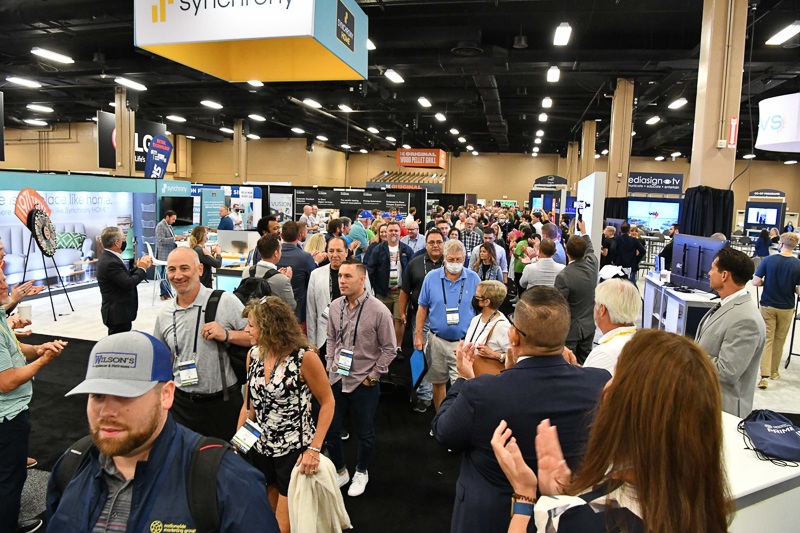
Best: Live industry events return.
The year may have gotten off to a slow start, but by August, live events were back on the schedule. Just in time to celebrate its 50th anniversary, Nationwide Marketing Group held its first in-person PrimeTime event in Nashville in August. More than 3,000 members and vendors gathered at the Gaylord Opryland Resort and Convention Center for the first time since February 2020. “I think we underestimated the power of the network and the people part of this,” said Tom Hickman. “People want to see each other.” Ditto BrandSource, which held its first convention since early 2020 at the same venue. In September, NATM held its first in-person convention in two years at the Ritz-Carlton, Dallas. Other shows that dusted off their booths and exhibition halls included CEDIA, the L.A. Auto Show, and Web Summit (which saw 40,000 people descend upon Lisbon for the convention’s first live event since late 2019). Meanwhile, all eyes are on CES 2022 in Las Vegas in January. While it’s a hybrid event taking place both in-person and online, the in-person event had 1,300 exhibitors confirmed at the end of October and the Consumer Electronics Assocation (CTA), which runs the show, expects up to 2,000 exhibitors by January. Let’s hope it ushers in a return to live form for all industry events in the new year.


Worst: Supply chain slowdown wreaks havoc on inventory.
Last year’s shortages of toilet paper, flour, sanitizer, and cleaning products seem downright quaint when compared to the supply-chain and inventory issues of 2021. Across every industry, products have been hard to procure, but the challenges have been big in the CE and appliance sectors, since electronics and appliances are the sums of many parts. The reasons for the slowdown range from a chip and labor shortage to the high cost of containers and fuel, and it doesn’t look like there will be much relief until well into 2022, if not longer. But here’s the thing. Smart devices are based on the gathering and processing of data, and that requires chips. With more data and more smart functionality in more devices – not just traditional gadgets and appliances – the need for chips is just going to grow.
“Demand [for chips] will only keep increasing,” said Kearney Strategic Operations practice consultant Bharat Kapoor, who calls the 2020s “The Decade of Chips,” in a recent interview for the November 2021 issue of Dealerscope. “We are seeing our world change as never before — a change even bigger than what steam and electricity did in their time. Industries outside of hi-tech are just realizing what these tiny chips can do,” he said. “The genie is out of the bottle.”
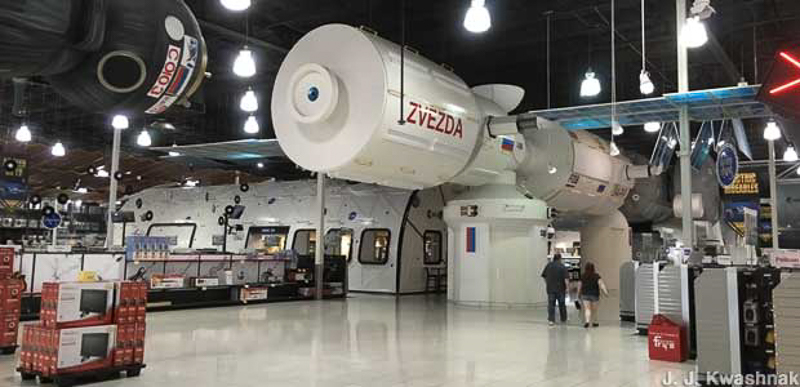
Worst: Fry’s dies.
It was, for many decades, the favorite electronics store of hobbyists. But on February 23, Fry’s Electronics announced that it was shutting its doors after 36 years. The chain, which at the end operated 31 stores in nine states — mostly on the West Coast and in the Southwest — cited “changes in the retail industry” and “challenges posed by the COVID-19 pandemic.” Fry’s, while beloved by enthusiasts, ultimately went the way of Circuit City, HHGregg, and Tweeter.
Fry’s was known for its themed stores, such as the space shuttle store in Anaheim, the Wild West location in Palo Alto, and the Mayan Temple in San Jose. Many had been noticing for a while that the shelves had been looking bare and that the chain was potentially in trouble, and those fears were confirmed in February.
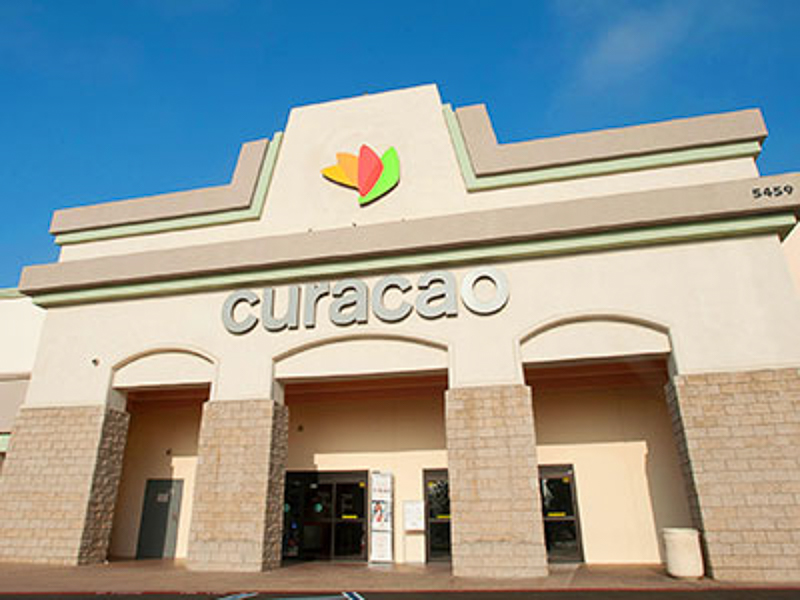
Worst: Curacao settles fraud charges for $10.5 million.
Four years after it was sued by the State of California for preying on low-income customers with deceitful advertising, unwanted add-on services, and unfair financing, Adir International, the parent company of retail chain Curacao, agreed to pay a $10.5 million settlement in March.
The suit, the California Attorney General’s office said, resolved “multiple allegations that the retail chain deceived and unlawfully profited from its largely Latino customer base.” The settlement included $10 million in debt relief for affected consumers, and $500,000 in civil penalties, as well as an injunction to cease the practices in question.
“Curacao claimed to be part of Southern California’s Latino community. It then proceeded to defraud low-income individuals, Spanish speakers and immigrants with little or no experience entering into long-term financing contracts,” then-California Attorney General Xavier Becerra, who has since become the Secretary of the Department of Health and Human Services, said at the time.

Worst: Data breaches big and small aren’t going anywhere.
The year 2021 saw quite a few significant data breaches throughout the consumer electronics and retail industries.
In January, a data breach hit the Walmart-owned retailer Bonobos, affecting 70 gigabytes’ worth of data from 1.8 million customers.
Office Depot admitted in March that it suffered a malware incident, one it expects to cost the company $20 million. The breach included nearly one million records including customers’ personal information in a non-password protected database.
In May, at-home exercise equipment manufacturer and livestreaming workout provider Peloton wasn’t hacked, but security researchers noticed that there was a significant vulnerability in the home bike company’s API for user account data. After Peloton didn’t make a deadline to fix it, the researchers went public.
In July, hackers breached gaming giant Electronic Art’s’ database and leaked the data following a failed extortion attempt. Among the data was
the source code for the popular FIFA 21 soccer video game.
Also in July, the ransomware gang known as REvil claimed to have obtained Apple product blueprints from a hack of Quanta Computer, and offered to sell them back to Apple.
In October, a breach struck the gaming platform Twitch, which is owned by Amazon. That leak affected 100GB of data and led to information about the payouts to top streamers being posted online. The streamers later confirmed that the payout information was accurate.
And also in October, computer manufacturer Acer suffered a data breach, its second of the year, with 60GB worth of files stolen from the company’s servers in India. A hacker group called Desorden claimed responsibly for the hack. The same company had been hacked earlier in the year by the REvil ransomware gang.
Security magazine, citing data from the Identity Theft Resource Center (ITRC), reported in October that 2021 will likely break the record for the most data breaches in a single year.
TRADE SHOWS
Tricks of the Trade Show
How to pull off a successful CES
public relations campaign
By PAM GOLDEN, President, GLA Communications
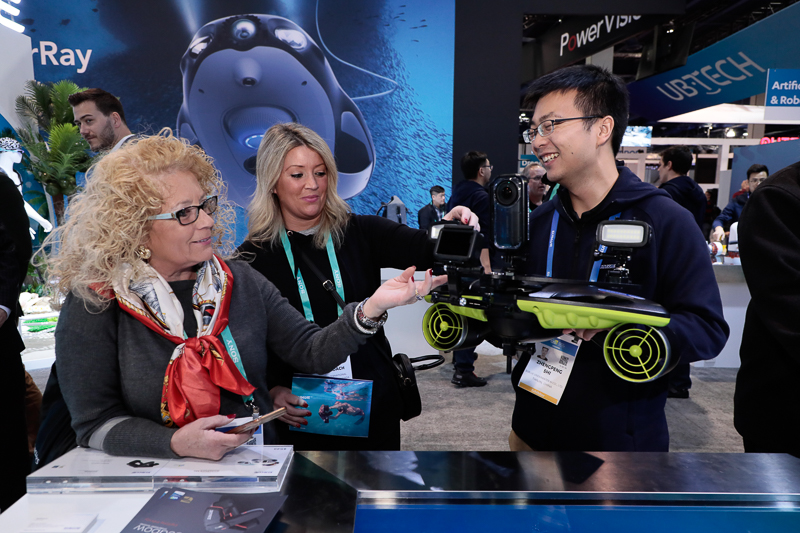
Whether you are a first time or veteran exhibitor, you can be sure of one thing: Hybrid CES 2022 will be different for everyone. Not only will you need to plan how to reach potential customers, partners, and media who are attending in person, but also how to connect with those participating remotely on the digital venue.
The first step is to determine your target audience – who are you trying to reach? The more specifically you can identify your ideal customer, the more clearly you can prioritize product features so those most appealing to your audience rise to the top. For instance, if you are targeting moms, is it moms of babies, toddlers, young children, or teens? Knowing the demographic is key to developing the message that will resonate best and help in determining relevant media.
Some questions to consider for help crafting
the messages to be used with media and customers:
1. How does your product fit into the industry narrative?
2. Is this the first of its kind, and if not, how is it different from the competition?
3. What problem does this product solve?
4. What benefits does this product provide?
How to Stand Out
Media outlets are good vehicles to tell your story and share your news, but how do you attract attention and get reporters to even read your email? Here are three ways:
- Highlight what is unique about your product and why it is important
in today’s world. - Only contact relevant media and do not send to the entire CES registered media list. This requires research to see who is writing or producing content about your product category. The biggest complaint I hear from reporters is about receiving press releases or pitches on products they don’t cover.
- Provide easy-to understand content and great assets such as links
to videos and images.
How to Pitch Media
Media are extremely busy, so it’s critical that the information you send is compelling. There is no consistent viewpoint on whether press releases are a valuable resource. Some media ignore, but others do read them. Many companies share their news in company blogs and share on social media. I often send a short pitch summarizing the key information and include a link to the release. No matter whether you are writing a release, a pitch, or a blog, make sure to:
- Provide clear and concise information.
- Use bullets rather than dense copy.
- Don’t use fluff or technical jargon.
- Include images embedded in email; photos capture attention more than words.
If you are offering an executive interview, then it’s okay to follow up once or twice. If you don’t hear back after that, then assume the reporter isn’t interested. Often a reporter will save the email and contact you in the future when they are working on a different story. I’ve heard from reporters as long as six months after I first reached out. Never follow up to ask if they received your email or press release and plan to write about your product. That’s a sure way to be blocked.
A successful PR campaign requires planning, a strong message, good content, and sometimes the right timing.

For more than 35 years, Pam Golden, founder and president of GLA Communications, has created successful communications programs and launched many products including DVD, HDTV, DirecTV and 4K TV.

SPECIAL ADVERTISING FEATURE
Harman
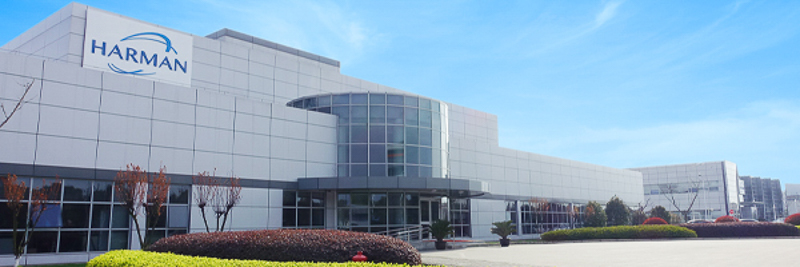
HARMAN designs and engineers connected products and solutions for automakers, consumers, and enterprises worldwide, including connected car systems, audio and visual products, enterprise automation solutions, and services supporting the Internet of Things (IoT). With leading brands including AKG®, Harman Kardon®, Infinity®, JBL®, Lexicon®, Mark Levinson®, and Revel®, HARMAN is greatly admired by audiophiles, musicians, and the entertainment venues where they perform around the world. In addition to the more than 50 million automobiles on the road today equipped with HARMAN audio and connected car systems, HARMAN software services power billions of mobile devices and systems that are connected, integrated, and secure across all platforms.
Whether at home, on the go, or in your car, HARMAN’s iconic audio products and breakthrough technologies set the standard for incredible listening experiences. The company’s audio brands remain among the most praised in the world and have earned 457 design and technology awards since 2013. And with a renowned lineup of in-ear, on-ear, over-ear, gaming- and sports-headphones, HARMAN is the fastest growing player in the global headphones space. JBL, the brand that has become synonymous with bold, powerful sound, skyrocketed to the top of the charts in 2020, has sold more than 100 million units to date, and celebrated 75 years of high-quality personal and professional audio solutions.
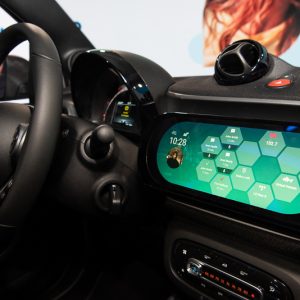
HARMAN’s Premium Digital Cockpit Platform provides unique user experiences thanks to advance display technology
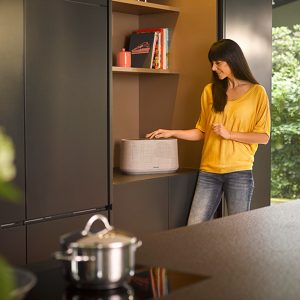
Harman Kardon Citation 300 smart home speaker
HARMAN also brings its exceptional technologies into the automotive space, providing immersive, connected experiences in vehicles with careful attention to quality, safety, ergonomics, and practicality. HARMAN’s end-to-end solutions provide automakers with the advanced connectivity needed to usher in a new era of mobility. With a dynamic portfolio of innovative automotive solutions for automakers, from hardware components to highly integrated Digital Cockpit platforms, to ADAS, cybersecurity, telematics, and more, HARMAN is the automotive technology integration expert.
Through end-to-end outsourced solutions, customized digital offerings, and bespoke product engineering services, HARMAN’s Digital Transformation Solutions (DTS) strategic business unit is taking technology beyond its superficial advancements to make life more efficient. Called HARMAN Life-Ware, HARMAN DTS combines software and hardware to easily integrate into daily life, address needs in real-time, simplify tasks, and help enterprises become an integral part of their end users’ world.
With a workforce of approximately 30,000 people across the Americas, Europe, and Asia, HARMAN’s global teams are dedicated to making life more connected, entertaining, personalized, and productive. By leading with integrity, innovating with intention, and driving operation excellence, HARMAN engineers solutions that enhance life’s experiences and connect people to the world around them. As a wholly-owned subsidiary of Samsung Electronics Co., Ltd. since 2017, HARMAN’s track record of more than 60 years of innovation continues.

HARMAN International
400 Atlantic Street
Stamford, CT 06901 (203) 328-3500
Michael Mauser,
President and Chief Executive Officer
harman.com
Year Founded: 1980
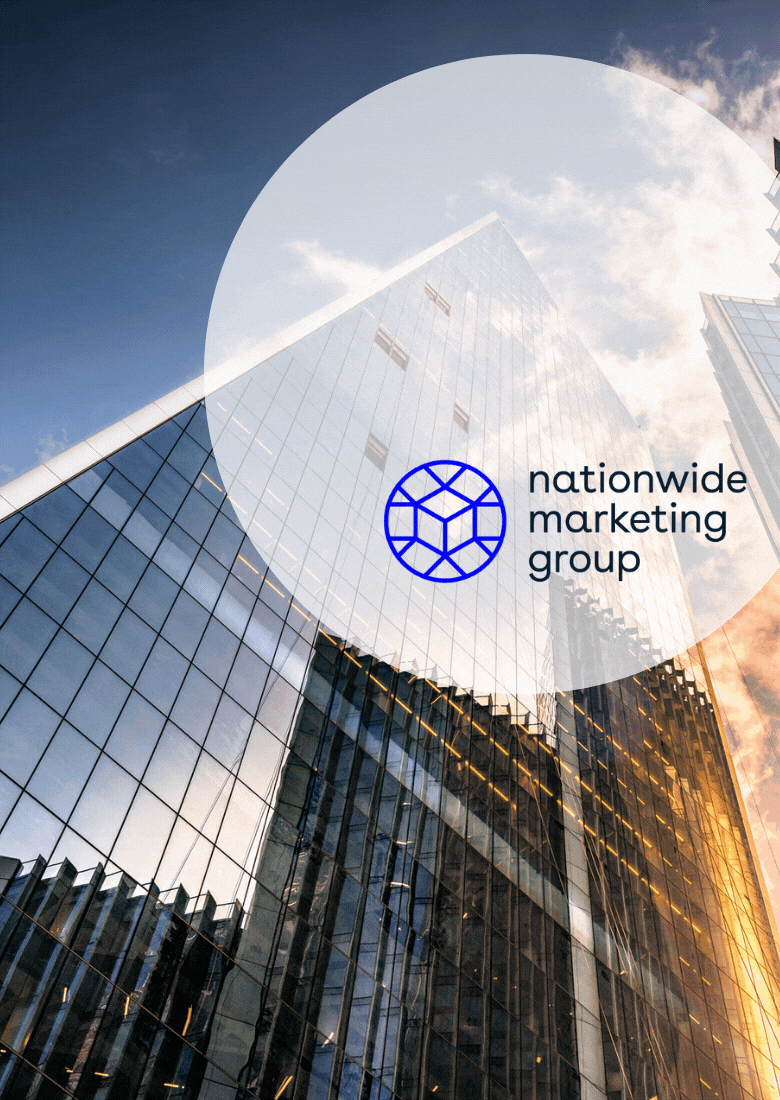
SPECIAL ADVERTISING FEATURE
Nationwide Marketing Group
Member-Focused and Performance-Driven
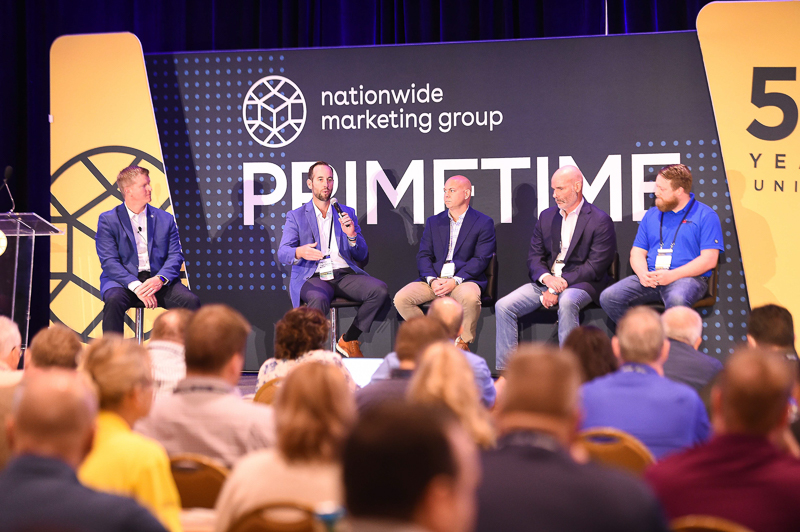
In today’s unsettled and unpredictable marketplace, Members of Nationwide Marketing Group are thriving. They’re taking market share, expanding their operations, and outpacing the industry, even in the face of the immense challenges the industry faced over the past year. And they’re attracting shoppers with the most advanced digital marketing platform in the Independent channel, converting them into customers both in store and online with the best-educated teams in the business, and reducing costs with unmatched buying power and comprehensive financial services.
With more than 5,000 Members who operate some 14,000 storefronts, Nationwide’s retailers represent the most influential voices in the Independent appliance, electronics, furniture, bedding, outdoor entertainment and connected services industries. The group’s semi-annual PrimeTime events deliver the largest gathering of Independent dealers in the channel’s history – even when those gatherings have to happen in a virtual setting. Part product exhibition and buying show with some of the deepest deals of the year, and part educational conferences with a curriculum of hundreds of sessions, PrimeTime is attended by thousands of Members and Vendor Partners. It also provides Member-to-Member networking, access to key decision-makers and industry authorities, plus updates on the latest trends and issues affecting Members’ businesses.
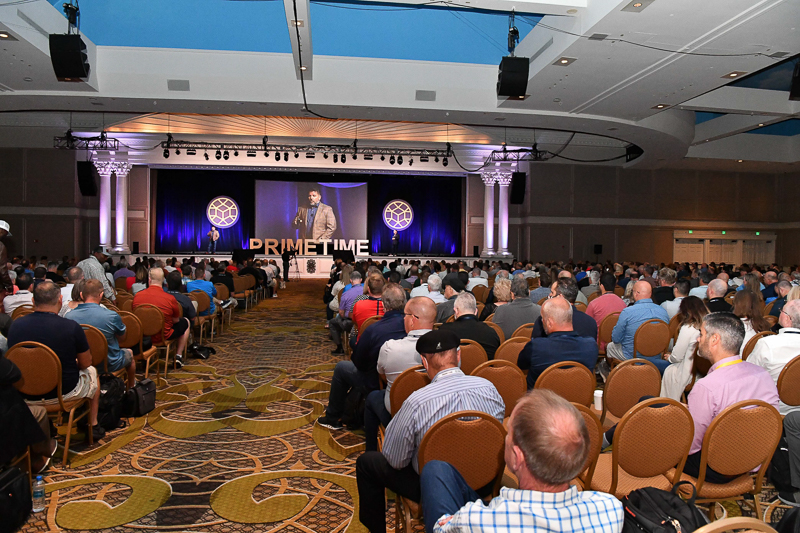
Now is a great time for Independents and an even better time for Members of Nationwide Marketing Group.
Nationwide Member Benefits Include:
- Unmatched scale for the largest aggregate purchasing opportunities in the channel.
- PrimeTime, the industry’s largest Independent buying show and Member conference.
- Group-exclusive sheltered products and private labels available in every major category.
- Industry-leading and group-supported digital marketing programs and website design services, which are constantly updated based on results from the channel’s largest reservoir of competitive data.
- Free access to powerful data-driven tools through the PriMetrix suite of programs, including personalized market- share analysis, the Assortment Rationalization Tool (ART) and the Retail Sales Analytics (RSA) platform, which are unavailable anywhere else in the industry.
- An exclusive partnership with AT&T that lets Members sell cell phones, cellular service, home internet and DIRECTV.
- Both group-provided and group-supported digital and traditional advertising assets and programs, from web video and TV commercials to in-store video, print materials and more.
- Group-negotiated inventory finance and retail finance programs, plus low credit card processing and business insurance programs.
- Nationwide Learning Academy live sessions and workshops held regionally and during both in-person and Virtual PrimeTime.
- The Nationwide Learning Academy online, a mobile-optimized video learning platform with hundreds
of new learning modules developed each year and hundreds of thousands of Member certifications annually. - Nationwide’s eXchange CE purchasing portal, featuring pricing comparisons and product information from the industry’s leading CE distributors.
- Access to affordable insurance coverage from Lockton Affinity, with the channel’s first and only health insurance program exclusively for Independent retailers and their employees.
- A dedicated dealer-driven servicer peer group designed to focus on best practices and addressing issues that servicers face.

Nationwide Marketing Group
Tom Hickman,
President and Chief
Member Advocate
609 N. Liberty St.
Winston-Salem, NC 27101
NationwideGroup.org
336.722.4681

SPECIAL ADVERTISING FEATURE
New Age Electronics

New Age Electronics, a division of SYNNEX Corporation, gives retailers the power to stand out from the crowd with a comprehensive product portfolio and customized solutions and services. Its teams conduct extensive research on the latest trends so retailers can stay ahead of the curve with the hottest products to satisfy preferences as consumers adapt to changing times. Premier services like merchandising, forecast management, supply chain management, concierge services, integration solutions, and electronic software download help make a positive impact on the retailer’s bottom line.
As new products and innovations continue to transform the Consumer Technology industry, New Age Electronics provides leading offerings around smart home and connected products, devices supported by 5G and Wi-Fi 6, PCs and peripherals, gaming and accessories, audio, virtual reality, drones, and professional and medical-grade hygienic devices. Many of these products have new commercial applications with people working in hybrid and remote environments due to the pandemic. Regardless of the application, New Age Electronics delivers nontraditional tools and solutions to give customers the competitive edge. And with over 30 years of industry experience, the company is an ideal launch pad for manufacturers looking to break into retail.
New Age Electronics’ unique delivery program, Build a Box, enables retailers to “step out of the box” with customized solutions that provide unparalleled customer experiences. The program offers collaborative planning, forecasting and replenishment; bundling; pallet shippers; services; and electronic software downloads. It includes exclusive SKUs, custom packaging and smart home solutions, and also reflects important seasonal trends when consumers are motivated to purchase new products including Super Bowl, Mother’s Day, Dads and Grads, Back-to-School and Holiday. New Age Electronics invites retailers to call to discuss how they can flourish in today’s highly competitive retail environment and provide the best Consumer Technology solutions that effectively drive consumers to stores and online. The New Age Electronics team is your true partner in the retail journey to success.

Fred Towns,
President

Lysle Elder,
Senior Director, Product Marketing

Eric Kirkendall,
Senior Vice President

Adam Del Vecchio,
Senior Director, Product Marketing
New Age Electronics
Public (NYSE: SNX)
Founded: 1988
Fred Towns, President
For Sales Inquiries:
Call: 800-234-0300
eMail: naesales@synnex.com
synnexcorp.com/newageelectronics

SPECIAL ADVERTISING FEATURE
Sharp Home Electronics Company of America
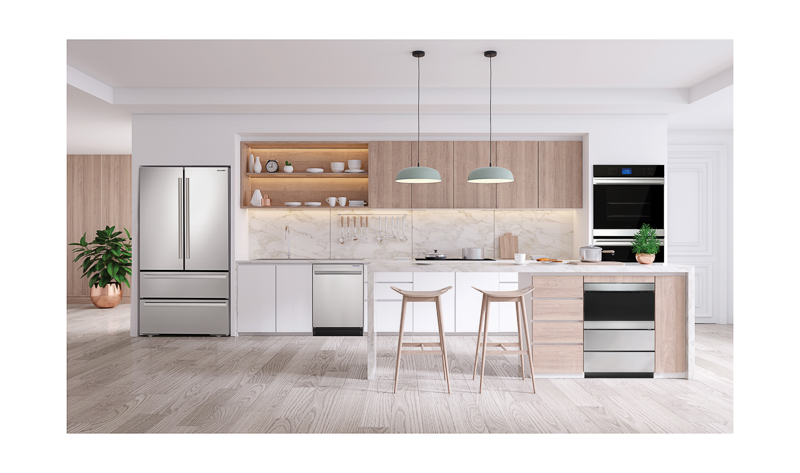
SHARP’s Built-in Full Kitchen Suite
At Sharp Home Electronics Company of America, we are committed to Simply Better Living. We believe our innovative home appliances are SIMPLE to use, BETTER than the competition, and encourage a HEALTHY LIFESTYLE.
Sharp Home Electronics Company of America is the U.S. Consumer Products division of Sharp Electronics Corporation, which is a U.S. subsidiary of Osaka-based Sharp Corporation – a company known worldwide for its unique one-of-a-kind electronic products and solutions. Our challenge is to create balance with products that can benefit people’s lives. Sharp consumer electronics can enhance your enjoyment, add to your comfort and open new perspectives.
The SHARP® Built-In Full Kitchen Suite is the modern, stainless steel, edge-to-edge black glass kitchen of your dreams, including our most innovative, built-in products like our Smart Convection Microwave Drawer™ Oven with Turntable-Free Baking, Roasting, Grilling, and Air Frying. Our contemporary and stylish European Convection Wall Ovens are a must-have for home entertaining. Elegant and sleek cooktops designed with matching black mirror glass enhance your dream kitchen. SHARP dishwashers and refrigerators provide a smart balance of features and options for a better experience in the heart of your home. Now that is Simply Better Living.
We invite you to find out more about us, the value we place upon Corporate Social Responsibility, our ongoing commitment to strong business ethics, and the numerous awards won by our innovative products, by visiting SharpUSA.com.

Jim Sanduski,
President, Sharp Home Electronics Company of America (SHCA)

Peter Weedfald,
Sr. Vice President, Sales & Marketing, Sharpe Electronics Marketing Company of America (SEMCA)
Sharp Home Electronics Company of America (SHCA)
is a U.S. Consumer Products division of Sharp Electronics Corporation
Founded: 1962 (PRIVATE)
Jim Sanduski, President
100 Paragon Drive, Suite 100
Montvale, NJ 07645
Sales Contact:
Peter Weedfald
weedfaldp@sharpsec.com
201-529-8711

SPECIAL ADVERTISING FEATURE
Synchrony

Synchrony (NYSE: SYF) is a premier consumer financial services company delivering customized financing programs across key industries including retail, health, auto, travel and home, along with award-winning consumer banking products. With more than $139 billion in sales financed and 68.5 million active accounts, Synchrony brings deep industry expertise, actionable data insights, innovative solutions and differentiated digital experiences to improve the success of every business we serve and the quality of each life we touch.
Our investments in technology across multiple platforms—in-store, online and mobile—allow us to engage consumers when and where they want. Our programs and tools strengthen the relationship between our business partners and their customers, driving growth and opportunity across the board.
For consumer electronics and appliance retailers, the Synchrony HOME™ Credit Card is a no-annual fee credit card designed for people who want a dedicated credit line for all their home-related purchases. The card is accepted at more than a million locations nationwide and provides customers more buying power and the cash back rewards they’re looking for to help meet their home ambitions.
From furniture and décor to flooring and appliances, the enhanced all-in-one card* gives customers more buying power and additional financing options. The card benefits include:
- 2% cash back as a statement credit on purchases under $299
- 6 months promotional financing on purchases of $299 or more
- 12-to-60-months promotional financing on qualifying purchases
at thousands of Synchrony Home locations nationwide
*Subject to credit approval. Minimum monthly payments required.Promotional financing offers available at the time of purchase may vary by location. See store for details.
More information can be found at synchronybusiness.com/home.
Synchrony
777 Long Ridge Road.
Stamford, CT 06902
844-684-4559
Synchrony is a leader in consumer financial services with more than 85 years of retail heritage.
Public, NYSE: SYF
RETAIL
Keeping It Upward
How dealers and integrators can work together to foster healthy business growth in 2022 and beyond.
By DENNIS HOLZER, Executive Director of the PowerHouse Alliance.

As we wrap up Q4 2021, the industry is reflecting on a year of tremendous growth accompanied by its fair share of challenges including supply chain disruption and chip shortages. Through the challenges, the CE and appliance industries continue to rise above as consumer demand for home upgrades and installations remains steady. For dealers and integrators alike, business is as good as it has ever been with new technologies coming to the market to fulfill the needs of consumers across the board. Even so, dealers and integrators still need to stay focused on both past and new customer business and industry trends in case the market slows down or is disrupted by additional challenges in the future. Let’s not forget how high everyone was riding ahead of the housing market crash in 2008. We can learn from the mistakes we made and continue to keep our businesses healthy for the coming year and beyond.
Become a Resource
Recently, Best Buy launched TotalTech, a program it piloted and has now made available to consumers everywhere. Dealers and integrators can learn from this model. Through a yearly $199 membership, consumers get access to 24/7 tech support, free installation on select products, discounts on custom installation, and “exclusive member prices”.
For those in this channel, the reality is that these benefits are not ground-breaking and they are services most integration companies are already readily offering, they just may not be packaged or marketed in the same way. Dealers and integrators should consider how they might be able to package a similar program. Integrators have been slow to adopt recurring revenue models, but a package like this is easy to execute and it provides the added level of customer care that consumers are looking for and can act as a resource for previous customers when they are contemplating technology upgrades.
The holiday season represents a prime opportunity in this market as consumers adopt new technologies. Dealers must act as a resource for customers. Compared to larger companies like Best Buy, integrators will have a better handle on the home and the installation needs of consumers making the relationship between dealers and customers more personable.

Marketing Is Key
Everyone is a marketer…until they’re not. It is easy to let some items slip when business is good, but what happens when it starts to slow down? A steady marketing cadence will ensure that integration companies are top of mind for both current and prospective customers.
Re-targeting past customers is a must and it’s a tactic that can yield new projects and upgrades. Dealers can share new product offerings, address trends that clients may be curious about, and get a pulse check on how their current system is working for them. With previous customers, the relationship has already been formed and the client trusts the judgment of the dealer, making it an easy way to acquire new business.
According to a study from Statista, 90% of adults ages 18-29 use social media networks. Millennials are active across social media platforms, and they are the group of consumers that are purchasing homes and making home upgrades. Dealers that think they can ignore this marketing opportunity are mistaken. Social media provides a platform for integrators to showcase their work and connect with existing customers, as well as market to new opportunities. Consumers look to social media for updates, tech support, and general communication with integration teams. Dealers can use platforms such as Facebook, Instagram, and Twitter to showcase new product offerings and upgrades forming a relationship with existing and potential new customers. Not only can social media be used for communication, but it can also be used to show off previous installations. Consumers can view company social media profiles to experience how installations work and how they look in a realistic setting. Dealers and integrators need to make sure they are investing in marketing initiatives as they are a great way to pitch business to existing and new customers and a good way to keep up with the competition.
How Can Distributors Contribute?
As dealers adjust business strategies to stay on top with new business initiatives, distributors are in the position to offer support and additional resources. If distributors notice purchasing patterns are down, they should reach out to dealers and integrators to promote new product offerings and technical updates. Distributors are also in the position to support dealer’s professional growth via trainings and webinars. Virtual and in-person trainings are a good way to promote new products, offer new ideas, and help dealers understand the importance of marketing to both new and existing customers.
While the industry reflects on a year of growth and challenges, it’s time to prepare for a new year filled with opportunity. By staying on top of scoring new business and marketing tactics, dealers and integrators are on their way to success in 2022 and beyond.
Summary:

- Customer demand for new tech and home upgrades is at an all-time peak, but the good times won’t last forever.
- In order to compete with big box stores, dealers and integrators must learn to package tech support and installation services that they’re already offering.
- Social media remains an essential channel to reach multiple generations and share everything from product updates to the latest installations.

HEALTH & WELLNESS
Hear, There, and Everywhere:
Smart Hearables
By MIKE KOBRIN
Lots of people have at least some hearing loss — 37.5 million and growing in the U.S., according to the FDA — but few do anything about it because of factors like price, access, and the stigma of wearing hearing aids. That’s about to change, as the FDA finalizes the rules for over-the-counter hearing aids, with no exam or prescription required. Also, Bluetooth has taken a few giant leaps forward in the last year and half, making it the perfect tech to power tiny devices like hearing aids and integrate them into our increasingly wireless environment.
Meanwhile, a related category of devices called personal sound amplification products (PSAPs) has brought many people back into the conversation, even though they’re not intended for people with actual hearing loss. So what’s the difference between hearing aids and PSAPs, and how will over-the-counter (OTC) hearing aids be different from traditional ones? Understanding these technologies and their applications will help you hear through the noise and provide the best options for your customers.

Phonak Audeo with charger

Charger Case Go Audeo
The Three Techs Changing the Hearables Landscape
Bluetooth LE Audio
Introduced in January 2020, Bluetooth LE Audio provides great sound quality with extreme power efficiency for small devices like hearing aids. That means the clunky behind-the-ear packs typical of traditional hearing aids will soon be a thing of the past, since devices will be able to cram plenty of juice into ever-smaller spaces. It also lets headsets stream audio directly from compatible electronics like TVs, enables new features like connecting to multiple audio sources simultaneously, and lets you listen in to live broadcasts streaming to multiple headsets.
Artificial Intelligence
Suppressing background noise without impacting the volume of someone nearby speaking to you is an indispensable feature for modern hearing-assistance devices. Artificial intelligence, however, makes noise reduction (filtering noise) and cancellation (generating soundwaves that cancel out noise) much more effective, allowing the device to fine-tune its performance based on your environment.
Head Tracking
Accelerometers and gyroscopes, like those in Apple’s AirPods Pro and Max, track your head movements so they can adjust sounds based on the physical position of your ears. While this is a fun feature for watching movies or concerts, it’s a game-changer for accurate pinpointing of audio sources you want in focus in a noisy area.


Apple AirPods Pro
Three Types of Hearables
Traditional Hearing Aids
Intended for users with a wide range of hearing loss, traditional hearing aids are tightly regulated as medical devices and are dispensed by health professionals with an exam and personal fitting. Most models consist of a battery/electronics module that sits behind the ear and a small tube terminating in an earbud that goes into the ear canal, though there are all-in-one types in which the whole kit sits entirely in your outer ear. The newest generation of hearing aids incorporates in-canal designs and Bluetooth connectivity.
OTC Hearing Aids
The FDA is close to finalizing a new class of OTC hearing aids intended only for users with mild to moderate hearing loss (not severe or profound loss). They don’t require an exam or personal fitting, making them somewhat controversial due to somewhat liberal loudness and fit restrictions that some audiologists believe could potentially lead to unintended additional hearing damage. However, many in the field, including New Orleans-based audiologist Dina Zeevi, feel that hearing aids “should be as common to see as a set of eyeglasses.” The FDA’s rigor in the approval process is crucial, she adds: “For mild to moderate hearing loss, the FDA must ensure that the devices are not over-amplifying loud sounds. But if it can force manufacturers to bring down prices and normalize hearing aids, I’m all for it.” Although OTC hearing aids are generally expected to be way more affordable than traditional hearing aids, high-end models like the Bose SoundControl Hearing Aids will still run you about $850.
Personal Sound Amplification Products (PSAPs)
This fast-growing category encompasses a wide range of products that make use of directional microphones and digital sound processing to capture audio from specific sources while filtering out background noise. One interesting twist on this theme is Noopl, an iPhone attachment that uses Apple’s AirPods Pro to track your head movements and separate out speech coming from wherever you’re looking from background noise.
Hearing loss used to mean a choice between social isolation and expensive hearing aids. Advances in Bluetooth and noise cancellation plus a recent FDA announcement are making hearing wellness more accessible and affordable than ever, even blurring the lines a little between headphones and hearing-assistive devices.
The Three Types of Hearables Consumers
Hearing Impaired
Mild to moderate hearing loss is defined by the CDC as the ability to hear some to almost no speech when someone is talking at a normal level. The WHO estimates that 466 million people globally suffer some degree of hearing loss, projected to grow to 700 million by 2050. Most of these people will greatly benefit from the availability of OTC hearing aids, especially as Bluetooth continues to gain efficiency.
People Without Hearing Loss In Challenging Environments
You don’t have to be hard of hearing to need selective amplification of sounds in challenging noise/distance situations like having a conversation in a noisy restaurant, watching TV shows or movies with difficult-to-hear speech, or even birdwatching. This is where PSAPs come in, with directional mics to capture sounds from precise locations and make them stand out. Most come with software that lets you fine-tune the audio to suit your needs.
The Prevention-Minded
According to Rick Neitzel, associate professor of environmental health sciences at the University of Michigan School of Public Health, “Even during this pandemic, when many people are staying home, we’re still seeing 25 percent of our participants experiencing high environmental sound exposures.” Foam earplugs or safety earmuffs can only go so far toward providing consistent protection from loud sounds while maintaining contact with the world around you. Artificial intelligence turns noise cancellation into a dynamic system that responds differently to various types of sounds, filtering out potentially dangerous construction noise while preserving or amplifying speech sounds.
BONUS: Some smart hearables can perform other health-related functions like heart rate monitoring and fall detection.
Determining a customer’s hearing needs correctly in the hearables space is critical, and while you don’t have to be an audiologist to guide someone towards the right product category, it’s helpful to understand the signs of different levels of hearing loss such as those outlined by organizations such as the AARP; these include everything from the obvious (trouble following conversations) to the more subtle (not remembering things people tell you).
HEARABLES COMPANIES TO WATCH: Sennheiser (whose consumer audio business was recently bought by hearing aid maker Sonova), Noopl, Olive Union, Apple, and Bose.

CES 2022 PREVIEW
On With The Show
INTERVIEW BY TOM SAMILJAN

What’s happening at CES 2022 in January? We spoke with
Jean Foster, Senior Vice President, Marketing and Communications at the Consumer Technology Association (CTA), to find out.

This year CES is a hybrid event, a mix of in-person and virtual. How will this be different from last year’s online-only event, and from previous in-person events?
It’ll be very different, but it’s an evolution of what we’ve been doing over the last few years. CES 2021 might have been all digital, but we were already making a lot of our content available to audiences that couldn’t be in Las Vegas back in 2019 and 2020. So while this year the main focus is obviously on the Las Vegas in-person event, we also recognize that it’s going to be a smaller in-person event in 2022. There are going to be people who can’t travel, even if they wanted to. So, in addition to the live event in Las Vegas, we’ll also be creating the digital platform again for those audiences that can’t participate in person. The difference for the online audiences in 2022 is that they’ll be able to see what’s going on live in Las Vegas, whereas last year everything was completely virtual, so we’re hoping to bring the excitement of Las Vegas to the digital audience that can’t be there.











What will the on-the-ground experience in Las Vegas be and how will that be streamed to the digital audience specifically?
So, for those who attend in person, they’ll be at a physical show that, albeit smaller, will have the trade show floor. We already have 1,100 companies signed up and we’re still very much in selling mode and new companies are signing up every day. We saw a bump when the Biden Administration announced the November easing of travel restrictions, so some of those country groups and delegations, both from Europe and Asia, that weren’t sure if they’d be able to participate, have now committed to participating as well. I think we’ll see that number continue to go up, but again, as we’ve said from early on, it’s not going to be the same size as events we’ve had in the past. The last in-person event we did was in 2020 and we’re typically at about the 4,000 mark. We’re comfortable saying we can get to 1,500 or 2,000 this time.
GM will be unveiling the new Chevy Silverado during its keynote. We also have an extensive conference program, as we always do, and that of course will be deeper for the people who make it in person because it’s the real hands-on experience that everybody knows and loves about CES.
Even so, for the digital platform, we’ll be able to bring that audience the keynotes and some of the conference sessions, which will be available initially live online only. There will be ways for the online audience to participate in a lot of the conference sessions. And there will be an exhibitor part of the digital platform, so people will be able to go in and book appointments and video chat with companies, to learn more about their products.











Will the show layout be the same in terms of halls and venues?
The exciting thing about this year is that we’re moving into the new West Hall facility at the Las Vegas Convention Center. I think we’re one of the first two shows to use that space, and it brings on 600,000 square feet of new space in this beautiful new hall. That alone is bigger than most convention centers in the U.S.. As a result, we’re able to move a lot of our exhibits over there.
For example, our vehicle and transportation area, which has been growing at CES over the years, is going to move to West Hall because it looks like this is going to be the biggest year yet for the vehicle and technology section.
The Digital Health category is also growing very quickly, so we’re moving that from the Sands to the North Hall, which is where the Vehicle Tech area used to be. So the extra square footage not only does allow us to accommodate growing categories, but it also lets us create more space in general. So, we’re able to widen the aisles to create more space between the individual exhibits themselves, which will alleviate some of those busy points of intersections.
You’re also going to see us continue to use a lot of outdoor space and outdoor exhibits, like the Central Plaza at the Convention Center. Google just confirmed, and BMW will be coming back to do its racetrack there.
CES will look different as we accommodate for the environment that we’re now living in. Overall, you’ll see a more spread-out show.











Will the Sands and Aria still be used for CES?
Yes, Eureka Park will be back at the Sands for all the startups, as well as Smart Home, so those are aspects of the show that people are used to seeing that will be set up they have always been. The C-Space at the Aria looks like it’ll be bigger than it has been in the past, at least in terms of the exhibitors that have signed up to participate. And we have some new programming there around NFTs and digital currency.
The only space that we won’t be using again this year is the Westgate, which we used for a couple of years as an overspill location when we expanded areas like Smart Cities, but now that we have this bigger footprint with the new West Hall, we’ll be able to bring more to the actual convention center itself.











Is there a limit to attendees this year?
We’re not limiting it, because we think it’ll naturally be smaller anyway, so we’re not putting a label on it, but we are looking at how do we actually just create that extra spacing so that there’s enough for people to move around and have social distancing on the show floor and in conference sessions.











What’s the protocol in terms of COVID?
There will be a vaccine mandate for this CES. We’ll be partnering with CLEAR to manage the validating process in the U.S, so we won’t be holding onto any of the data. And we’re working to identify a third party to handle that internationally. We’re also looking to see if there are any situations that would enable someone with COVID antibodies to attend. At the moment, there’s no FDA test for antibodies, so that’s still TBD, but it’s under consideration.
As of now, the local laws in Las Vegas require that masks be worn inside, so we’ll continue to track that. We’d recommend that people be prepared to wear masks inside, but we’ll make a policy decision on that in early December.











CES today is covering so many more categories such as NFTs, Space, and Food Tech. Can you tell us a little more about what constitutes Space and Food Tech in the context of CES?
We’re always trying to bring in new elements of technology. One of the coolest new activations is going to be from a company called Sierra Space. It has a contract with NASA to take goods to the International Space Station. The company is going to bring in one of its space planes, which will be on the show floor. You’ll also see a lot of established brands such as Intel, Qualcomm, and Canon talking about space as part of their activations.
In terms of Food Tech, we’ll definitely have companies like Impossible Foods, which will be launching new products, but there is also hardware. There’s a company called Beyond Honeycomb that has an AI-driven robot that will replicate any recipe, but also John Deere that focuses on the agricultural aspect, so you’ll see an array of technologies under the Food Tech umbrella.
And in terms of cooking or kitchen appliances, we’ll be seeing a lot of exhibitors with smart appliances and smart kitchens in different parts of the show, including Smart Home and Food Tech.











What about some of the most classic, core CES categories like TVs?
All the big bellwether companies – Sony, LG, Panasonic, Samsung, and so on—are back and will be in Central Hall. The TVs and the displays are always such a cool factor of the show. And it’s the same for these companies; it’ll be the first time that they’ll be making live product launches in two years, so there will be some great connecting of people and some big announcements.











Beyond the traditional hardware CE and appliance categories, what other topics will be of interest to retailers?
I think one of the most interesting and surprising stories to come out of C-Space are the new ad agencies and new ad platforms from companies like Walmart and Amazon. C-Space is a slightly different type of show because the companies there don’t have a product, per se; they’re there to do business. Imagine, this is the first time that this community has come together in a couple of years. CES is so important to this industry because it hasn’t really had a platform for a couple of years; they usually go to Cannes Lions, but that hasn’t happened for a couple of years. It’s the same with the Automotive category. It’ll be one of the first times the automotive industry is coming together in person.











So, the pandemic upended everything, accelerating some industries and arresting others. Which technology sectors and technologies grew and innovated the most as a result of the pandemic?
We’ve seen a huge acceleration of innovation in smart homes and healthcare. The healthcare side of our business is growing. Abbott Labs will be doing a keynote. This is the first time we’ve had a digital healthcare company on the stage at CES — and that’s because it’s now a tech company and, like a lot of other companies, it’s choosing the CES stage to almost rebrand itself.
Digital health has experienced a lot of growth that was pandemic-driven. The category doesn’t just focus on physical health and wellness, but also mental health and digital therapeutics, as well as more issues such as more equitable access to health. Therapeutic technologies that are predictive are one of the biggest areas we’ll be focusing on. I’d say healthcare has probably seen the most innovation lately — that’s what we’re seeing from our members, from the show floor, and from the conversations that we have on Capitol Hill.
One of the biggest indicators for innovation is our CES Innovation Awards. This year, we had more than 1,800 entries; that’s the highest number we’ve ever had. For CES 2021, I think we had about 1,500, so it’s a significantly larger number for 2022. I just think we’ve seen an explosion of innovation over the past couple of years.
CES 2022 runs from January 5-8, 2022 in Las Vegas and online.
For more information, go to ces.tech.
STAT SHOT
CE Industry By The Numbers
COMPILED BY SAM HITT
10pm
…the time until which Walmart drivers will make deliveries for any buy-online, pick-up-in-store (BOPIS) orders made by 6 p.m. The big-box retailer has extended these hours for the entire holiday season of 2021.


85%
…of respondents to an International Convention of Shopping Centers (ICSC) survey said they plan to conduct holiday shopping in-person at physical store locations. 75% of these same shoppers are preparing to get an early jump on it due to global supply chain issues.


14
…nanometers, which is the size of the industry’s smallest mass-produced DRAM. Developed by Korean manufacturer Samsung, the 14nm EUV DDR5 helps reduce device power consumption by almost 20 percent in comparison to older-generation DRAMs.
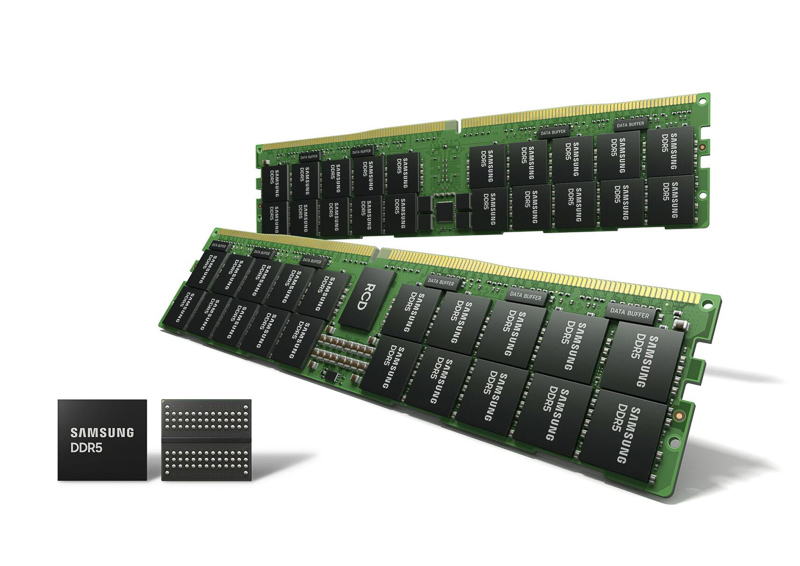

15
…corner retail spaces are empty in the blocks near Grand Central Terminal in New York City. Almost 30 percent of overall storefronts in the office-dense area were empty through Summer 2021, according to a REBNY report.


30,000
..square feet will be the size of some of the first Amazon department stores to be rolled out across the U.S. These Amazon department stores will carry a variety of products prominently featured on the website, including a plethora of Amazon brands.
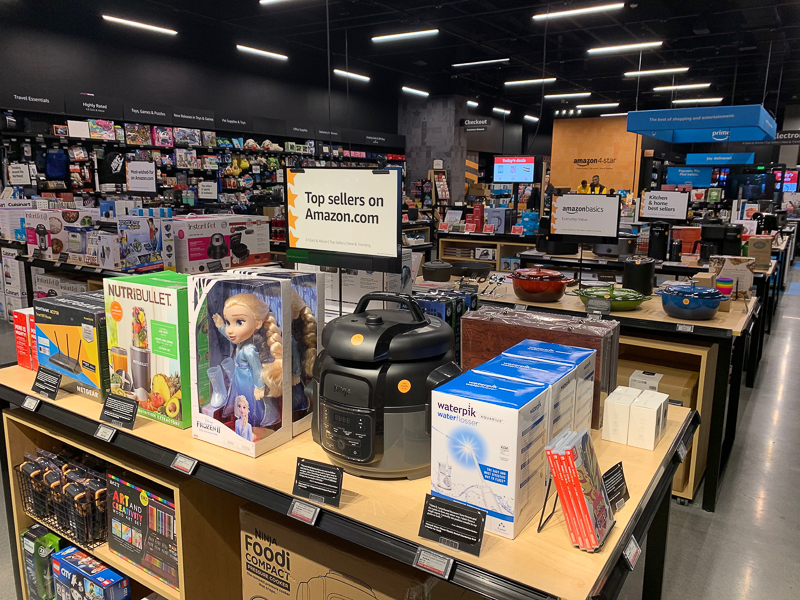

DEALERSCOPE PODCAST
Welcome to the Dealerscope Podcast – Your Source for all B2B trends in Retail, Tech and Biz!
In the high-strung consumer electronics retail business, it can be hard to take a moment to step back and breathe. The Dealerscope Podcast gives CE retail leaders the chance to kick back, relax, and talk shop in a casual setting.
CONSUMER TECHNOLOGY CALENDAR
Upcoming Events
January 5-8, 2022
CES
January 16-18, 2022
NRF 2022: Retail’s Big Show
February 7-11, 2022
TCEA
February 8-10, 2022
KBIS
February 18-20, 2022
Florida Audio Expo
Get Dealerscope
and Connected Design
delivered to your doorstep
or to your email.
Click on the links below to update how and where you receive your issues! Change your mailing address or request a change from print to digital, subscribe to our newsletters, or just head to our websites.
CONNECTED DESIGN
Subscribe to Print Magazine
Renew Your Subscription
Subscribe to Newsletters


OFFICES
100 S. Juniper St., 3rd Floor
Philadelphia, PA 19109
132 West 31st Street, 9th Floor
New York, NY 10001
EDITOR IN CHIEF
Tom Samiljan
tsamiljan@ctlab.media
CT LAB EDITORS
Sam Hitt
Erinn Loucks
CONTRIBUTORS
Pam Golden
Dennis Holzer
Nancy Klosek
Mike Kobrin
Amanda Narcisi
John R. Quain
Patrice Samuels
Egon Sanders
Brandon White
CREATIVE
Astrid von Krenski
(940) 727 8595
avkrenski@ctlab.media
CHIEF SOCIAL MEDIA AND WEB EDITOR
Brenda Thelusca
(561) 752-6670
bthelusca@ctlab.media
GROUP PUBLISHER
Tony Monteleone
(718) 216-2046
tmonteleone@ctlab.media
OPERATIONS MANAGER
Vicki Manucci
vmanucci@ctlab.media
CIRCULATION & DISTRIBUTION
Carrianne Ramsey
cramsey@ctlab.media
ACCOUNTING/HR MANAGER
Catalina Gonzalez
cgonzalez@ctlab.media
CHIEF OPERATING OFFICER
Alice Schmalzl
(940) 612-9581
aschmalzl@ctlab.media
OFFICES
100 S. Juniper St., 3rd Floor
Philadelphia, PA 19109
132 West 31st Street, 9th Floor
New York, NY 10001
dealerscope.com
Publisher of Dealerscope, and Connected Design
Copyright ©2021 CT Lab Global Media LLC
CT Lab Global Media is a diversified publisher of business and professional magazines. This publication is provided with the express understanding and agreement that the information and data within it will be solely for internal use and will not be used for the creation or updating of mailing lists for sale or distribution to third parties. Printed in the U.S.A.

